Social Media Marketing Guide for Small Businesses – Winning Strategies to Conquer 2023!
When Facebook widened its network in 2006, the new age of marketing – Social Media Marketing began. Since then, social media channels have not only become an integral part of our lives but a necessity for businesses' marketing mix.
Marketers embraced social media with passion as they predicted its potential quite early. Unlike traditional offline channels, social media has revolutionized marketing by giving marketers the unprecedented ability to collect consumer data and evaluate campaign performance with precision.
If you are a small business owner or have just launched your startup, you must be eyeing to foster good and lasting connections with your consumers – social media marketing is the way to go. This guide will explain everything you need to know.
From basics like setting up a Facebook business page to effectively setting up marketing winning marketing strategies, we have covered everything in this guide.
This will be a very long guide, so if you want to read this in your free time, you can download this blog post in PDF format.
We’d suggest not going through this blog post in one go because you won’t absorb the core and essence of what you’ll read.
Download the Social Media Marketing Guide For Free!
Discover how you can enhance your brand’s online presence and generate more revenue with social media marketing. Download now and unlock the world of possibilities!
This is a comprehensive social media marketing guide for startups, small businesses, and budding entrepreneurs. This guide will help you to increase brand awareness, create winning social media strategies, generate leads, and boost conversions. Your time is valuable, so we’ve broken down our guide into headings and subheadings, which you can access through the table of contents.
CHAPTERS
Social Media Marketing – An Overview
Understanding Social Media Marketing And The Platforms
Choosing The Right Platform(S) For Your Business
Forming and executing a perfect social media strategy for small businesses
Re-strategizing based on your insights
Wrapping it Up!
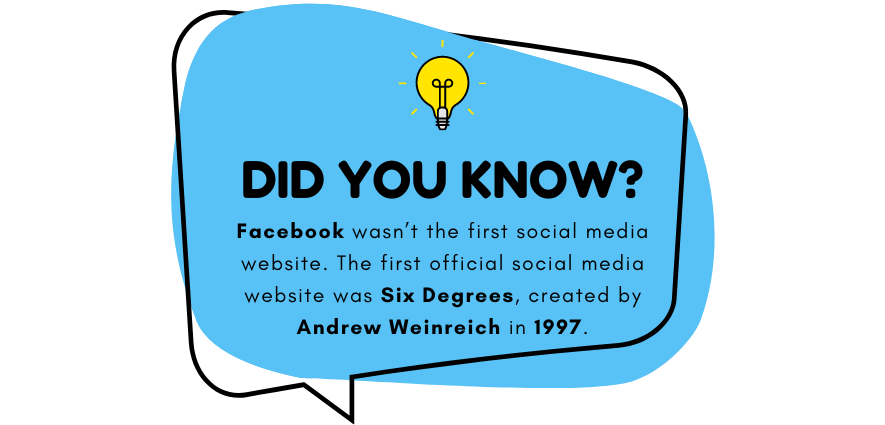
Wondering from where it all began? The concept of social media didn’t start with Mark Zuckerberg’s Facebook, but it all started in the late 90s when Andrew Weinreich launched Six Degrees in 1997. It was just a matter of time before the world was introduced to social media marketing.
Facebook was first launched as a platform where friends meet and share updates about their lives. Similarly, Twitter was just a mini version of a personal blog, and Instagram was only a photo-sharing app. Today, all of these platforms have emerged to become the most popular marketing channels.
After Facebook widened its network, brands and businesses across the globe jumped on the bandwagon by creating pages to engage with their customers. Thus began the age of social media marketing. Today, social media ad-spend stands at approximately 230 Billion US Dollars and is expected to surpass the 300-billion mark by 2024.
Now that you know the background and history of social media marketing, let's move ahead. We will give you insights about some of the most popular social media platforms so you can have an idea of which one is perfect for your business.
Let Us Walk Through Some Popular Social Media Platforms
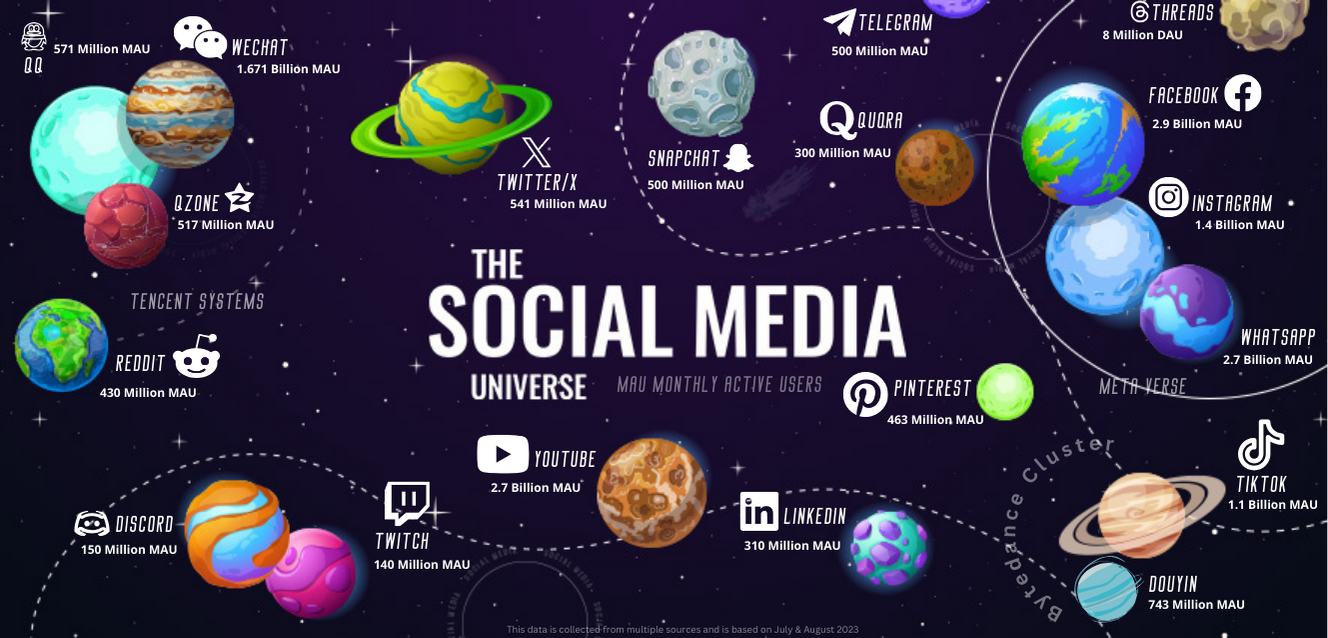
Daily Active Users: 2.037 billion
Industry Impact: Primarily B2C but also B2B
Audience: Generation X and Millennials
Best For: Brand Awareness, Advertising, Lead Generation
Twitter/X
Daily Active Users: 259.4 Million
Industry Impact: B2B and B2C
Audience: Adults aged between 35 and 65
Best For: Public Relations, Educational videos, Opinion Polls, Discussion Threads.
Daily Active Users:500 Million
Industry Impact: B2C
Audience: People aged under 40
Best For: Lifestyle, E-commerce, Visuals heavy business, Behind the scenes
TikTok
Daily Active Users: 600 million
Industry Impact: B2C
Audience: Younger Generation Aged Between 10 and 39
Best For: Fun Video-based Content for Entertainment and Engagement
YouTube
Daily Active Users: 122 million
Industry Impact: B2C
Audience: Young Adults Aged between 15-35
Best For: Education, Entertainment
Daily Active Users: 134.5 million
Industry Impact: Primarily B2B
Audience: Adults aged between 25 and 34
Best For: Business Development, B2B Relationships, Employee Branding
Snapchat
Daily Active Users: 750 million
Industry Impact: B2C
Audience: People Younger than 25
Best For: Entertaining Content For Reach (Not too much product oriented)
Monthly Active Users: 463 Million
Industry Impact: B2C
Audience: Predominantly Adult Women
Best For: Lifestyle Tips, Fashion and Personal style, Decorating, or DIY
*This data is taken from multiple sources and updated till August 2023.
We believe now you must have a clear understanding of which platform(s) will get along with your needs, so let’s move forward. We will now take you into the past once again to show you how a big brand used social media marketing and campaigns during the early days and what the impact was.
Coca-Cola Share A Coke Campaign - A Trip Down Memory Lane
Coca-Cola Share a Coke campaign came out in 2012, and it didn’t take too long to become one of the most successful marketing campaigns ever. The campaign featured a Facebook Advertisement that invited users to create their own custom Coke cans and also share virtual Coke cans with their friends.
Share a Coke was one of the most successful social media campaigns of all time. Around 76000 virtual cans were shared online, Facebook.com saw an 870% increase in traffic, and Coca-Cola's Facebook page had a 39% increase in fans.

Apple #ShotOniPhone Campaign – User-Generated Content Done Right
In 2015, Apple came up with its Shot On iPhone campaign, encouraging users to post the pictures they have clicked from their iPhones. The prize was to get featured on one of the 10,000 billboards around the world. In 2017, when Apple came on Instagram, they kept #ShotOniPhone going as an organic advertising campaign. This resulted in more than 16 million entries on Instagram alone.
This was one of the most cleverly pulled marketing campaigns to get user-generated content. Obviously, the idea was to market the iPhone, but most of the entries didn’t feature the product itself. So, technically, they marketed their product without showing it. To this date, the #ShotOniPhone campaign runs on itself without Apple putting a hefty budget and effort into it.
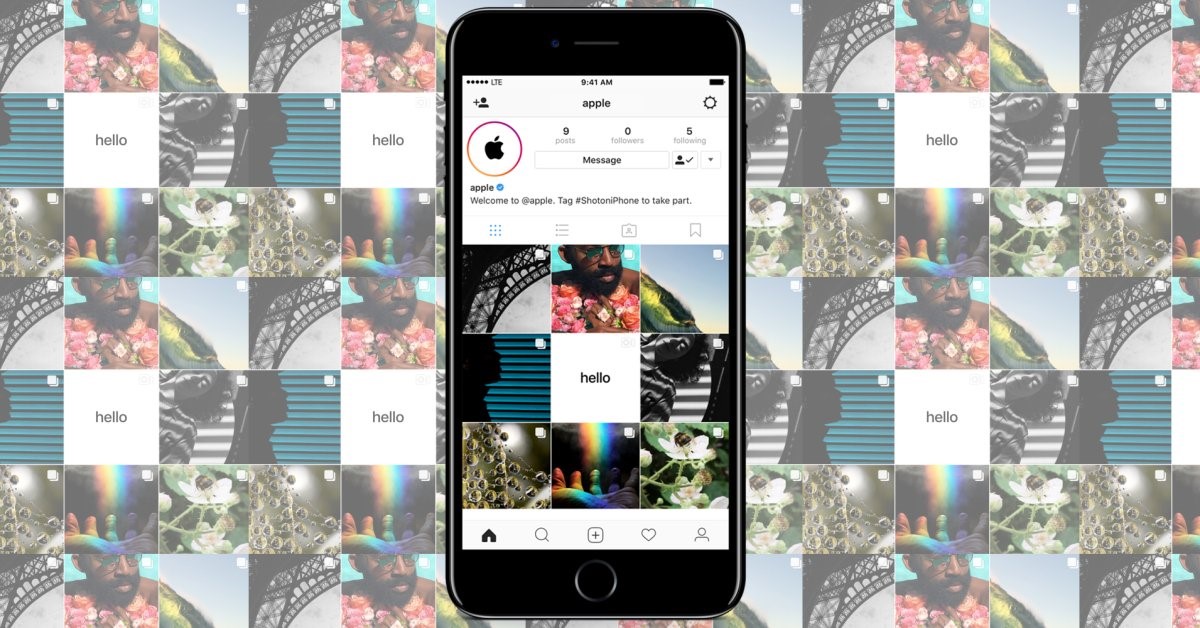
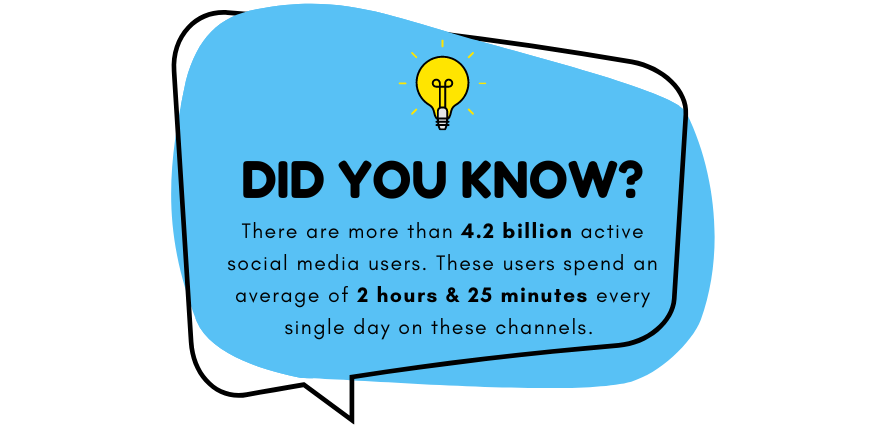
As we have already provided you with the idea and overview of some of the famous and most used social media platforms, we now move forward to understand these platforms. In this chapter, we will be discussing social media marketing and social media platforms in detail and how you can add these channels to your marketing mix as per your business needs. So, let's begin.
What is Social Media Marketing?
Social media marketing is all about creating content to promote your products and services on social media platforms. It allows brands and businesses to build a community around their target audience while driving traffic to their business. With new features and platforms emerging every day, social media marketing has become a need for every business to survive in this highly competitive era.

Common Myths about Social Media Marketing
As we move forward, it is important to address some of the most common social media marketing myths that you might have come across whenever you think about setting up social media for your business. The list of social media myths is never-ending. In this guide, we have added some of the most common myths that are relevant. But if you want to know more, you can read our blog.
All Platforms are equal
Some businesses mistakenly assume that the same content can be repurposed across all social media platforms without considering the uniqueness of each platform and the diverse preferences of their audience segments. This approach overlooks the power of personalization and fails to recognize that different platforms cater to different types of content consumption. Effective social media strategies take into account the specific characteristics of each platform. For instance, Instagram might be more visual, while Twitter is known for its concise messages. Businesses should tailor their content to fit the format and expectations of each platform. Additionally, audience segmentation is key. Businesses should create content that speaks directly to the interests, needs, and pain points of different audience segments. This level of personalization fosters a stronger connection with the audience and increases the likelihood of engagement and conversions.
Quantity over Quality:
This is one of the biggest myths of social media marketing. You might have heard many social media influencers and gurus saying that you should post daily to get more reach and engagement. To be more specific, they talk about posting reels or short content on a daily basis. But this is not right. Flooding your audience’s feeds with content can cause content fatigue. And you might end up losing followers. The audience on social media prefers quality over quantity. It is about relating with them and building a deeper connection. And not about forcing them to buy by overselling. Once the audience relates to your content, it websiteskit-input-placeholder get reshares, more likes, and comments.
Ignoring Emerging Platforms
Dismissing new or emerging platforms can mean missing out on early adoption advantages and accessing untapped audiences. Back in 2016, when Musical.ly became TikTok, businesses were not eager to be on the platform. It was just a short music video platform where content creators posted their videos. Fast forward to 2023, and everyone is ready to pay a hefty amount just to target the TikTok audience and market on this platform. TikTok has become a household name for businesses. Affiliate marketers are making a lot of money from the platform by marketing for both small businesses and large corporations.
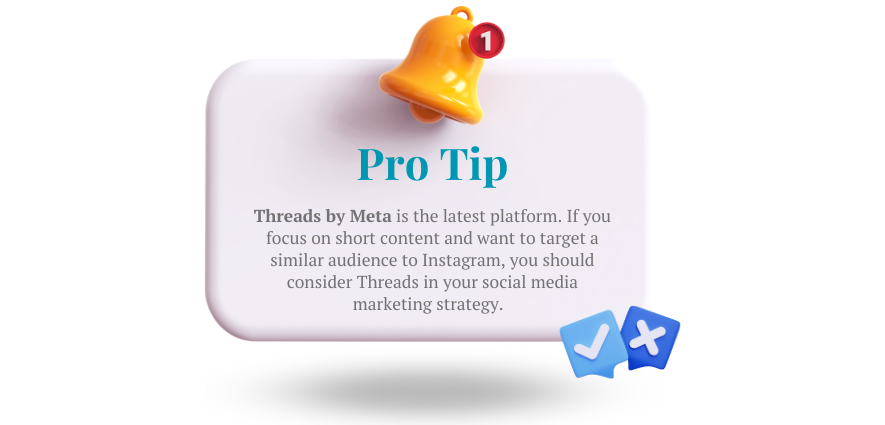
Why do small businesses need social media marketing?
As we become more digitalized, the era of traditional marketing has nearly ended. Gone are the days when your sales were dependent upon costly TV commercials or big billboards. Traditional marketing does exist, and some businesses still advertise through these channels, but this is the era of social media marketing. Regardless of the size of the business, social media marketing is important for everyone, especially for small businesses that cannot afford to advertise on expensive channels like electronic or print media.
Social media marketing has paved the way for emerging businesses and aspiring entrepreneurs to reach a global audience. The rise of social media is opening up fresh and consistent chances for small businesses, content creators, and social media influencers. Using influencers on social media has become a valuable way for emerging businesses to reach customers and boost sales.
Moreover, social media marketing offers numerous benefits to small businesses, which we will discuss later in the upcoming chapters. But if you are curious to know it right now. You can read our blog on why small businesses need social media marketing.
Understanding Social Media Marketing Platforms
As we have mentioned in the previous chapter, there are more than 100 social media websites on the internet. People spend most part of their days on these sites regardless of what they do, but one thing that you should always keep in consideration is your target audience’s preferred platform. For example, if you are a small clothing business, you should definitely market your business on the most popular B2C platforms like Facebook, Instagram, and TikTok. Whereas, if you are an enterprise or a big corporation, YouTube and Linkedin must be your top priority. Don’t worry, we will discuss each platform in detail so you can have a more clear understanding of which platform will suit you the best.
While we all know about social media giants like Facebook, YouTube, Instagram, and TikTok, there are other websites that lots of people use but not many people know about. Even though you might have one of the famous websites open right now, we want to tell you about some social media platforms that are like hidden treasures on the internet. These websites have lots of users, but not many people talk about them. Let us introduce you to these cool websites and their user base.
430 Million Monthly Active Users
Reddit is a news aggregation, content rating, and discussion website. It is a platform where you can find a community for anything and everything. The site is broken up into forums related to specific topics. These forums are called ‘Subreddits.’ Members can ask questions, participate in live Q and A sessions called Ask Me Anything, and can ‘upvote’ content they would like to push on top of a subreddit.
As a business, it’s a good strategy to participate in subreddits related to your niche. But be cautious while engaging with users and promoting yourself. Reddit has its own guidelines on self-promoting. It is better to read them to avoid getting banned.
Quora
300 Million Monthly Active Users
Quora is a social Q and A website. You can find questions and answers related to literally any topic on this platform. Quora is a 100% user-generated content site. But keep in mind that not all answers are accurate as they don’t come from an authentic source.
People can vote for answers they like or don't like. This helps find good answers to questions that are based on opinions. Businesses can also talk to customers on Quora. They can answer questions and ask questions themselves. This helps them connect with people. But don’t try too hard to sell things.
Instead, you should show that you know what you are talking about and that you are an expert on a specific topic. That’s how you can emerge as a thought leader in your niche on Quora, and you might end up selling your products or services to them.
Discord
150 Million Monthly Active Users
Discord is a place for talking to people online from all over the world. You can join different communities (servers) or make your own and chat using text, voice, or video.
People on Discord chat for about 4 billion minutes every day! But, there are no ads on Discord. Instead, businesses can make their own group and talk to customers there. Any business can use Discord if its customers use it. You can answer questions, share news, and take recommendations from your customers.
Twitch
140 Million Monthly Active Users
Twitch is a live streaming platform mainly for gamers. However, some people stream creative content like videos, music, and other vlog-style content.
In the first quarter of 2021 alone, users watched 6.13 billion hours of content on Twitch. But you might be thinking about how businesses can advertise or market on Twitch. Here’s how:
Influencer Marketing: Brands team up with influencers who showcase products during their live streams to their followers.
Ad Campaigns: Put up banners or in-video ads on certain channels (these channels must be part of the Twitch Partner program).
Branded Channels: Establish a community by hosting live streams, conducting company interviews, and sharing brand news.
When you carefully observe your competitor’s ad timings, you can easily find short intervals when your competitor’s ads are paused, and your target audience is active.
Now that you have a clear understanding of a few more platforms other than the conventional ones. Let’s move forward to learn how you can set up accounts and pages for your business. In the next part of this chapter, we will show you how to create and optimize your Facebook, Instagram, LinkedIn, and TikTok business accounts.
Setting up a Facebook Business Page
Despite the focus has shifted towards growing platforms like TikTok and Instagram, Facebook remains at the top for businesses. So, let's dive into how to create and optimize a Facebook Page.
Step 1: Create or Choose a Facebook Account
To create and manage a Facebook page, you must have a Facebook profile or account. You can either use your personal Facebook account or keep your business separate from your personal Facebook by creating a new one.
Once you have decided on the administrator or admin of the Facebook page (from the account you will be managing the page), log in with that account and create a Facebook page. You can also click on the menu icon on the left, then click Page under the Create section.
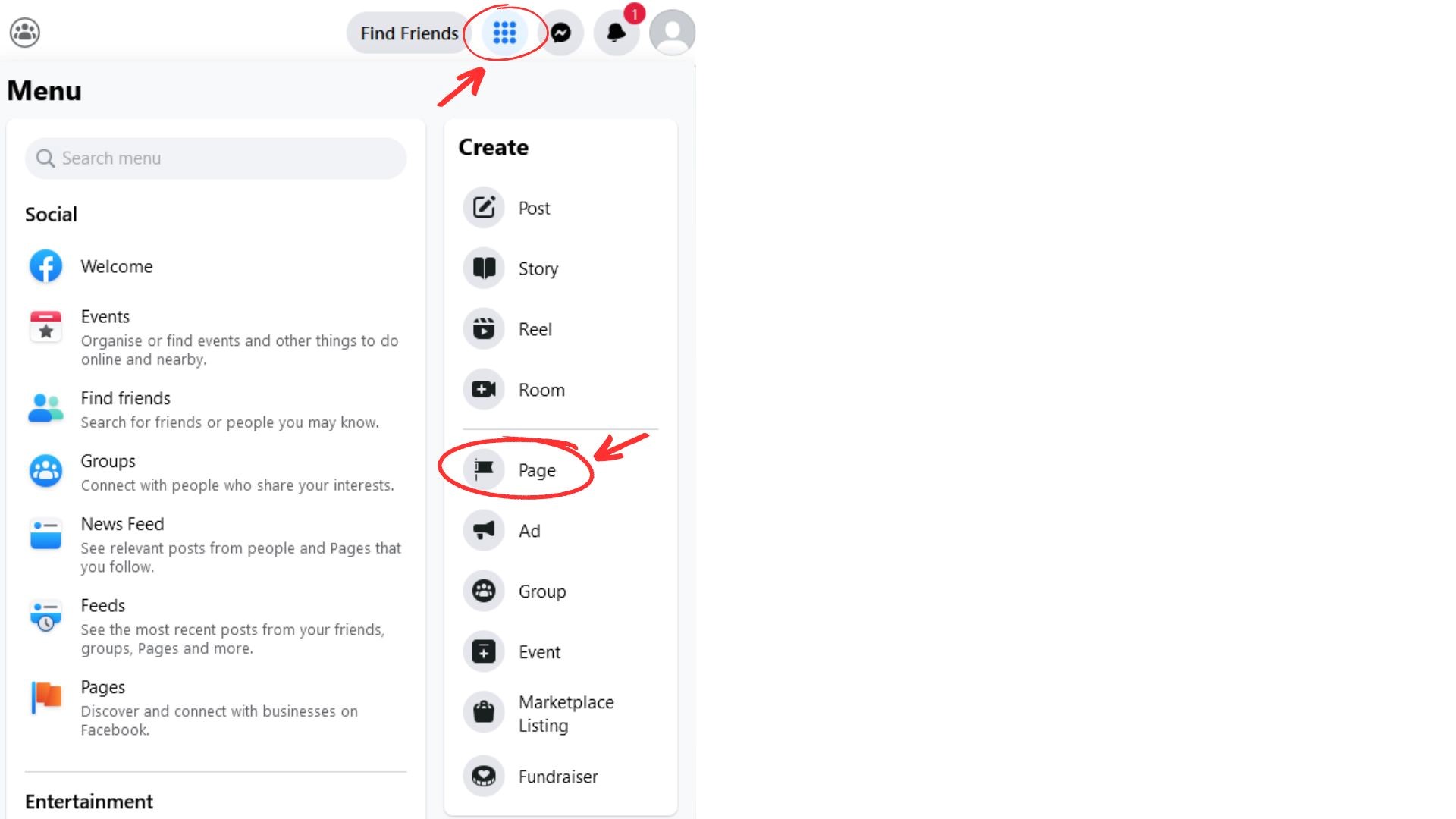
Step 2: Enter your basic information
You need to enter 3 things to create a Facebook page.
Name: This is the title or public name of your business page.
Category: Choose a category that describes your business the best. Start typing words, and Facebook will suggest options.
Description/Bio: Describe your business in 1 or 2 lines. This can work as your elevator pitch.
Then click or tap Create a Page

Congrats! You have created a Facebook Page. Now it’s time to optimize it.
Step 3: Add more details to your Facebook Page
Just follow the prompts to provide more details, such as your business hours, location, website, and phone number – all the essential information. Feel free to skip fields like phone number or address if you want to, as they are optional.
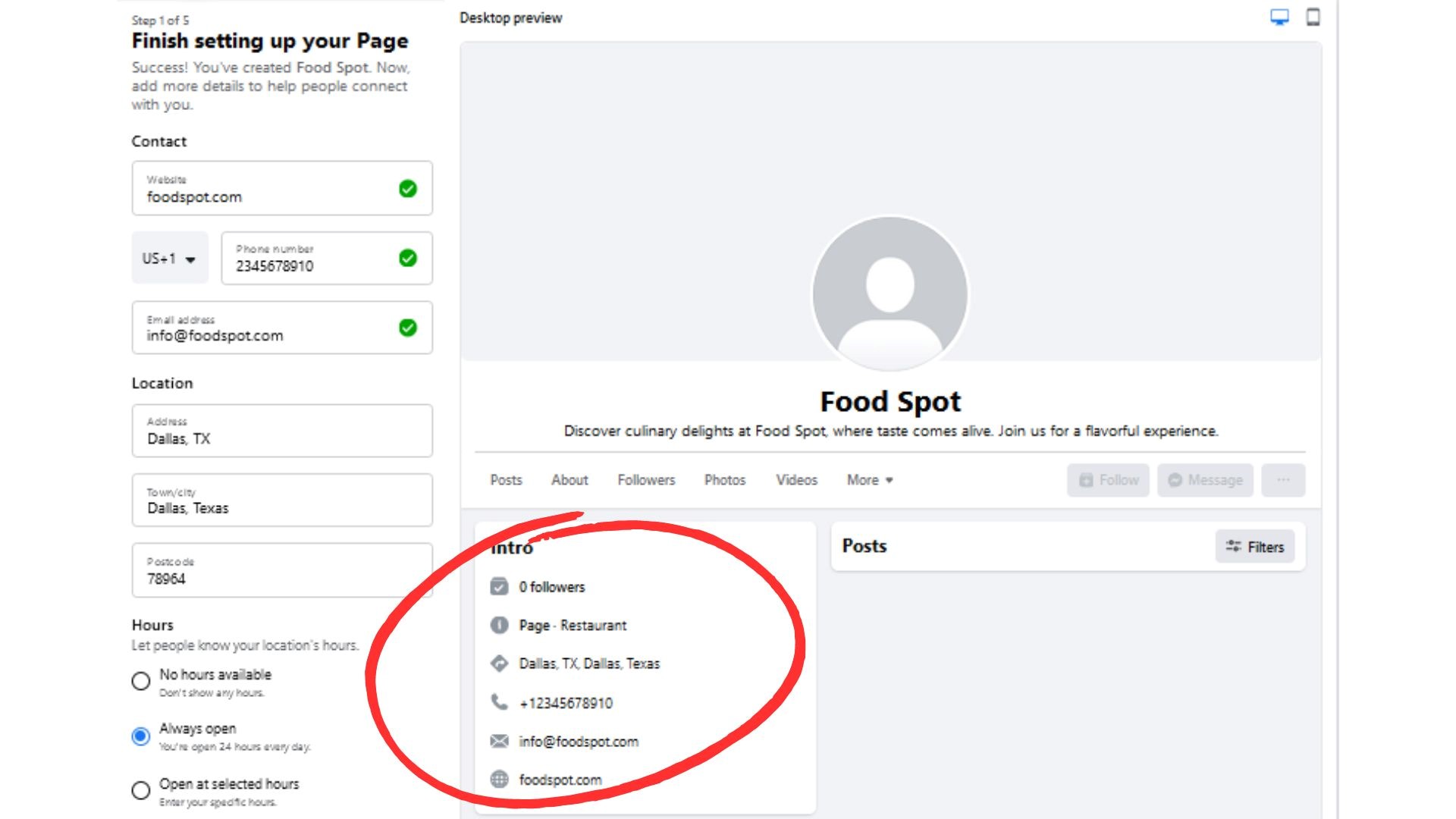
How to create a Facebook page in 2023
It's important to keep your business's look consistent on Facebook so your customers know they're in the right place. Facebook profile and cover photos serve just the purpose. These pictures do more than just make your page look nice – they're like signs that say, "Hey, you're at the right place!" Imagine having your name on your backpack so you don't mix it up with others.
Here's a tip: Your profile picture should have your special logo, like your own superhero sign. And if you add a cool background color, it'll catch people's attention even more.
The big picture or the cover photo at the top is like a big poster for your business. You can use it to show what your business is about or tell people about fun things happening, like a discount offer or a new addition to your product line. If you're planning to have an event, you can put up a picture of that!
So, as you know, sometimes the sizes of pictures on social media change. But these are the accurate sizes for 2023
Profile picture: Square format, at least 170px x 170px
Cover photo: 851px x 315px
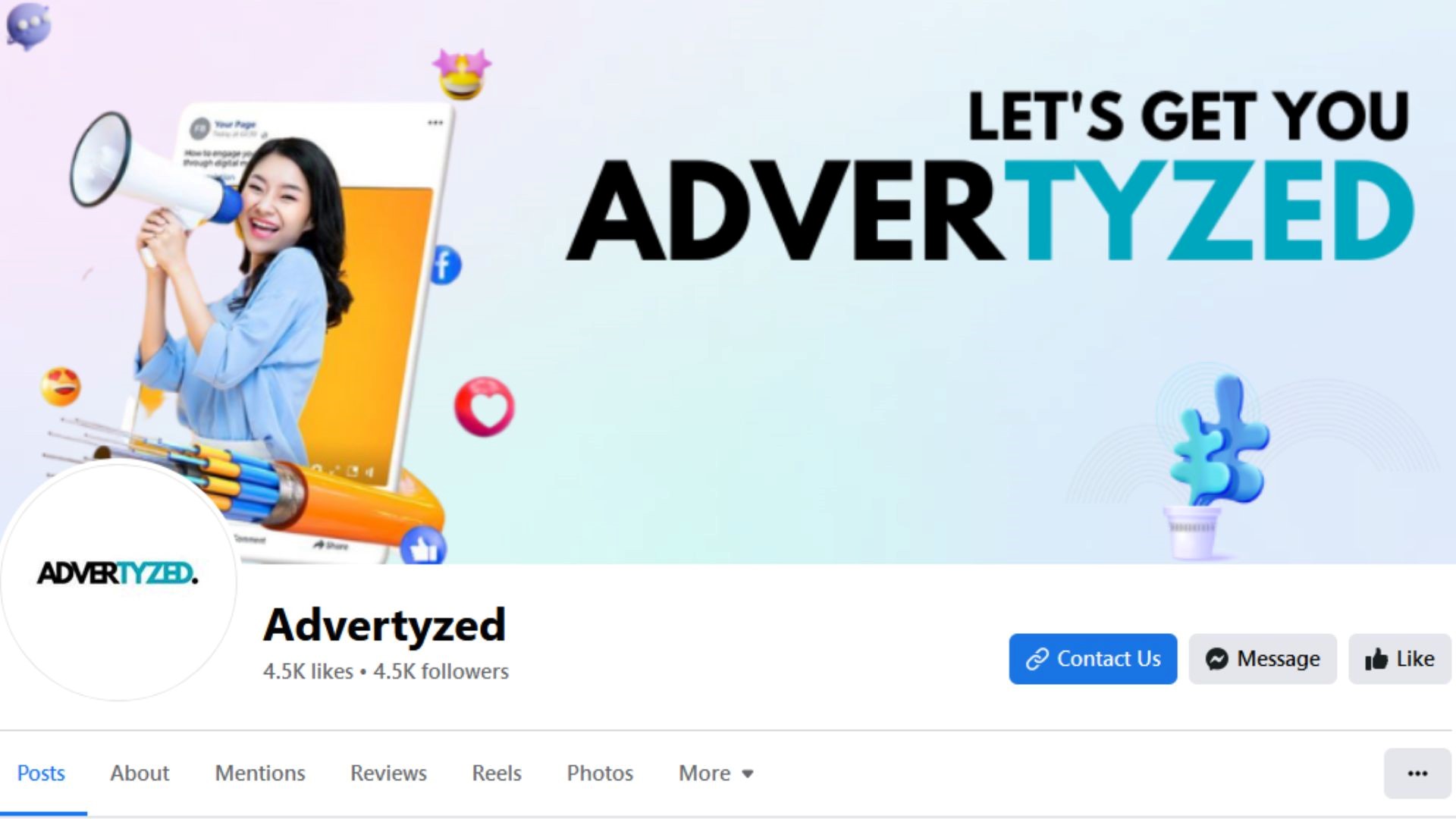
Remember, having a profile and cover photo makes your page look cool and helps people recognize your business, just like a special sign does for a store!
Step 5: Add Action Buttons
The action button at the top acts as the main call to action button. Which means the specific action you want your customers or visitors to take. You can link your website (visit our website), a landing page, signup, or a call now button to that section. You can also connect business-specific services like ‘Shop Now’ if you have an online clothing store or maybe ‘Start Order’ if you are a restaurant.
For example, ours is a Contact Us button that will take you to our website, where you can fill out the form.
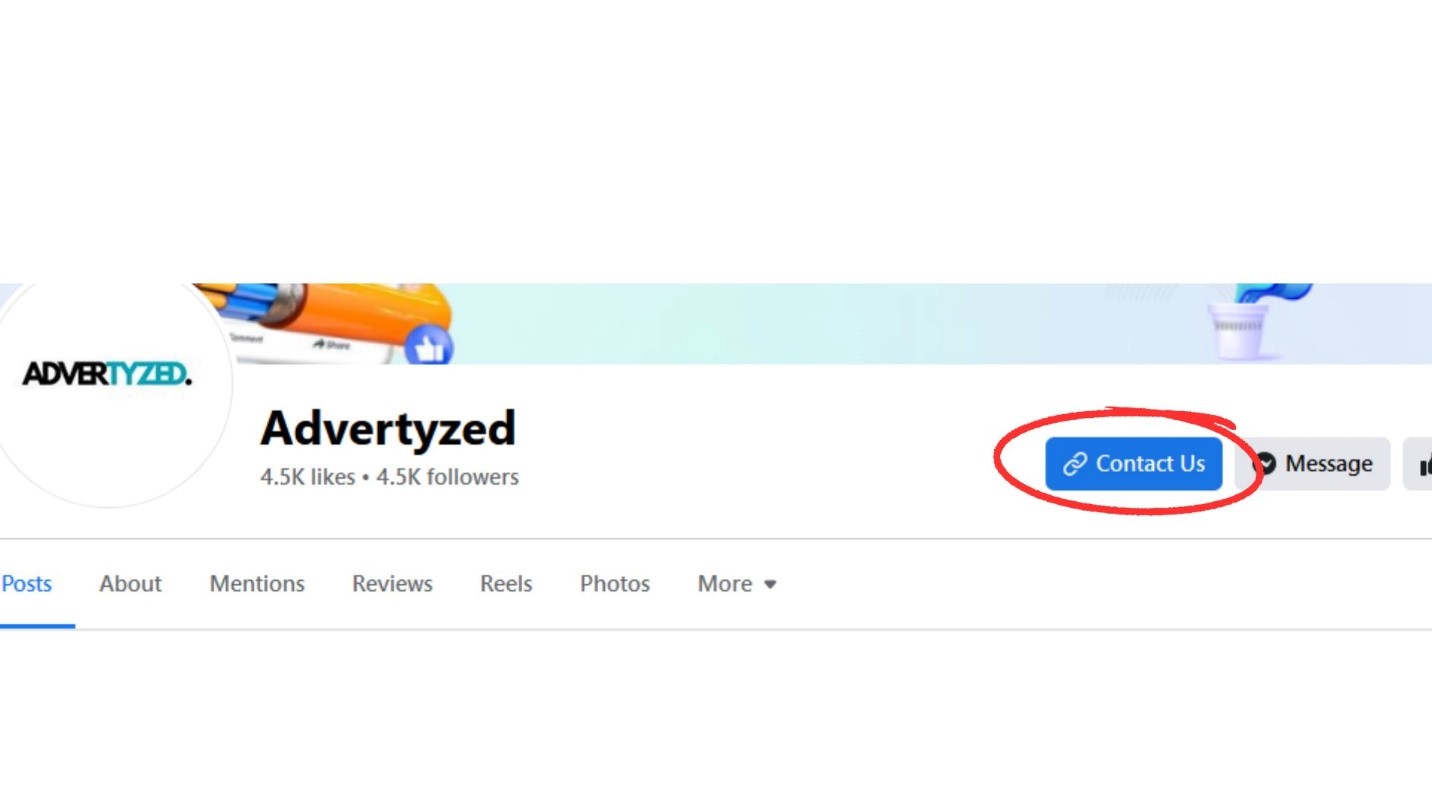
To add an action button, click or tap on ‘Add action button.’ Then choose the action you would like your audience to perform. Link your website or add your number and BOOM! You are all set.
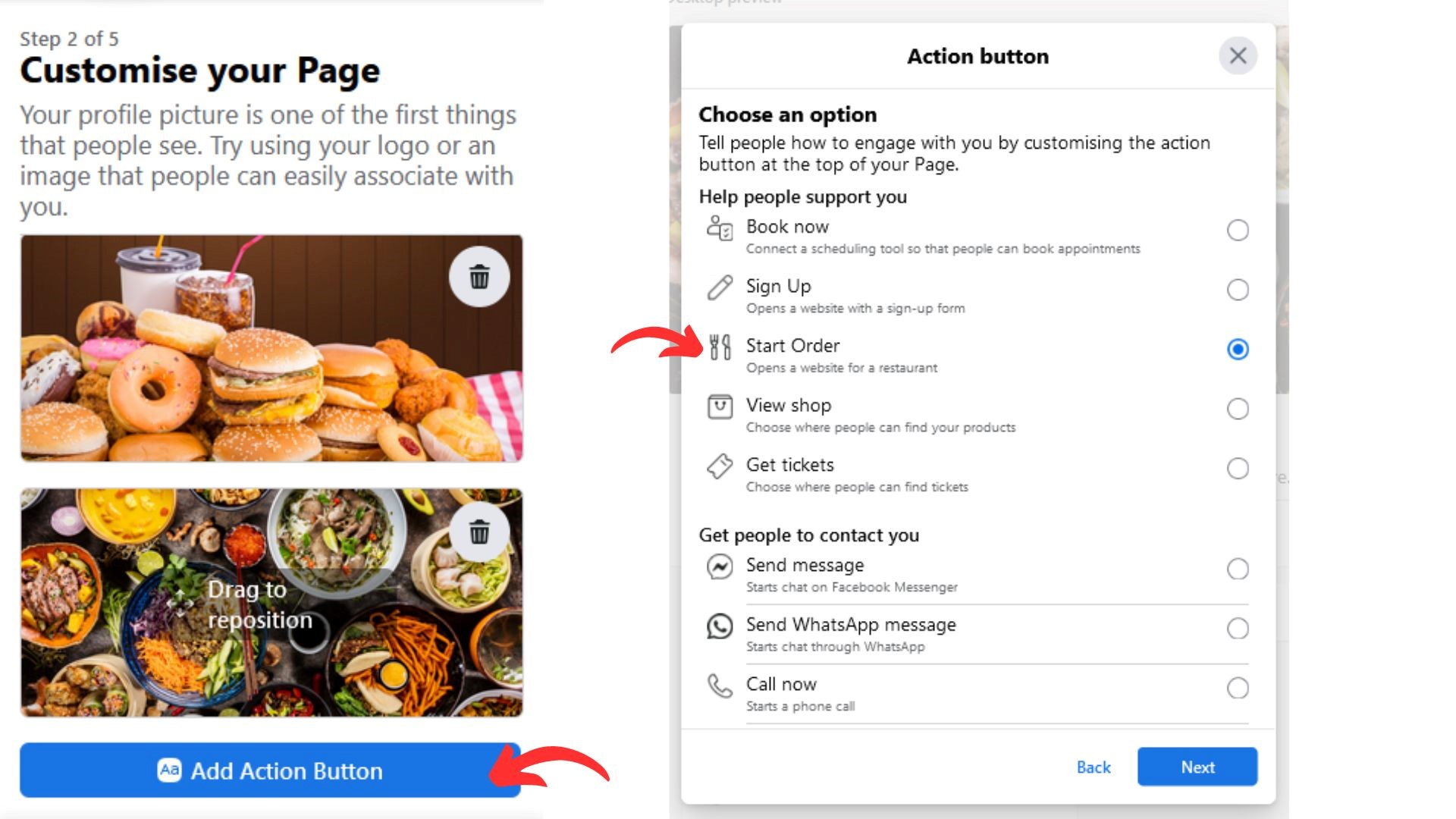
How to customize the action button on Facebook page in 2023
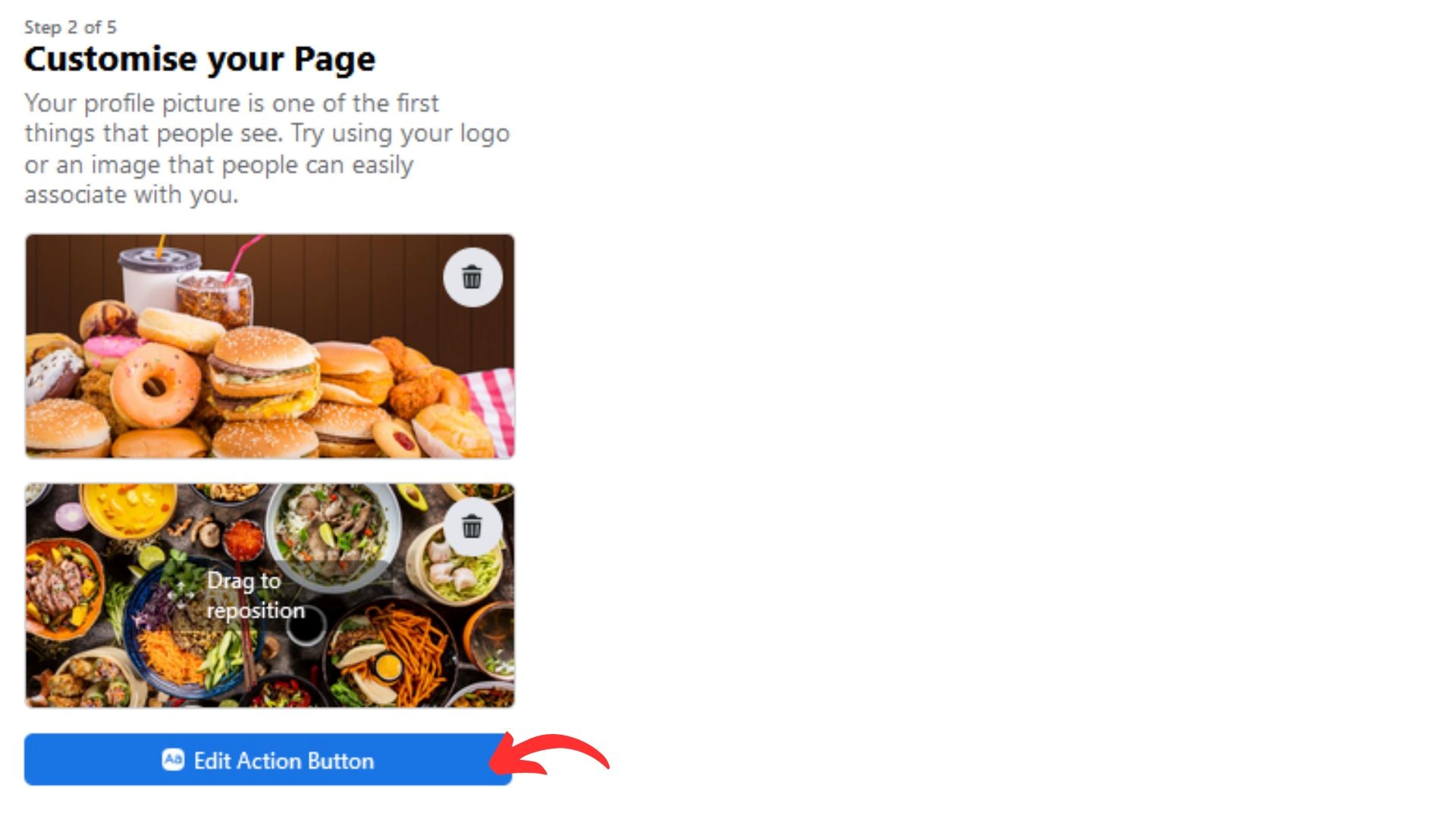
Step 6: Optimize Your Facebook Page
You're at a good point to start posting on your new page, but for the best outcomes, consider these steps to optimize your page further:
Add Your Website: Make sure to include your website link and a short About description. This helps people learn more about your business.

Connect with WhatsApp: Allow customers to reach out directly on WhatsApp by linking your Page to WhatsApp Business. This provides an alternative to Facebook Messenger.

Provide Location and Hours: If you have a physical store, share your address and opening hours in the About section. This helps customers find you easily.
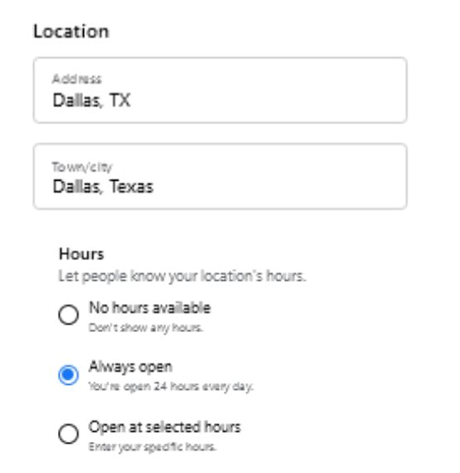
Enable Reviews: Gain trust with new visitors by displaying ratings and reviews. Keep an eye on these to ensure they're from real customers. Address any negative feedback professionally.
Settings > Page and Tagging > Allow others to add reviews

Edit Page Tabs: Customize your Page's appearance by hiding sections like Likes or Reviews, and any irrelevant categories. You can do this under "More" in your Page management dashboard.

Create a Custom URL: Make your Page's link more user-friendly and professional by setting a custom Facebook Page URL. You can do this in "General Page Settings."

Your page is ready to kick off! Start posting mind-blowing content to keep your audience engaged. Taking these steps will enhance your page's credibility and optimize it for your audience.
Setting Up a Professional Instagram Account
After Facebook, Instagram is one of the most used social media platforms, with more than 1 billion monthly active users. One of the best advantages of having a professional or business account on Instagram is that the users happily follow the brands. Ready to join the ranks of the 200 million business profiles that daily users interact with? Allow us to guide you through the steps of creating your Professional Instagram account.
How To Set up an Instagram Business Profile
Setting up an Instagram account isn’t as complicated as creating a business page on Facebook. But how do you get it? Don’t worry, we will tell you. Here is the step-by-step guide to creating an Instagram business profile.
- Head on to your Instagram profile page (circle at the bottom right with your profile picture) and tap on the menu
 in the top right corner.
in the top right corner. - Tap Settings or Settings and Privacy at the top of the list
- Tap Account then scroll to the bottom of the list
- Tap Switch to professional account
- Tap Continue and continue through the steps, beginning with ‘Get Professional Tools.’
- Choose a Category that best describes your brand or business. It is optional if you want to display the category on your profile or not.
- Once you tap on Done, you will be prompted to answer whether you are a Creator or a Business. Tap business if you are a brand and creator if you are planning to become an Influencer.
- Next, review your contact information. You can add your number and email. It is optional if you want to display your contact info on your profile. If you don’t want to, you can turn off the option.
- Next, you will be prompted to Connect Your Facebook Page. If you already have a Facebook Page, connect it with your Instagram account and enjoy the ease of cross-platform posting. But if you don’t have a Facebook Page, you can navigate to the bottom of this section and tap on Don’t Connect a Facebook Page Now. It’s totally fine not to have a Facebook Page. If you think your audience is not available on Facebook, it is advised to go with an Instagram account only.
- Next, you will be prompted to set up your professional account. Here, you can browse your new features and tools.
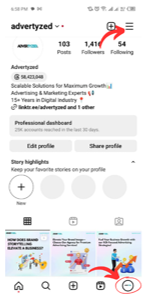

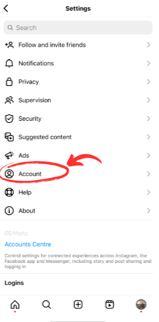
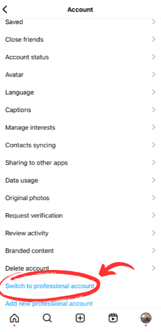
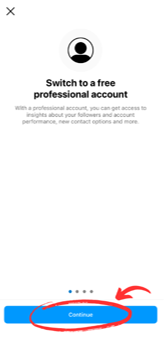
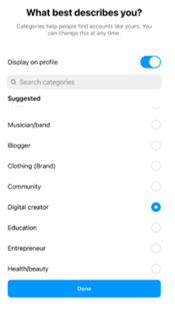
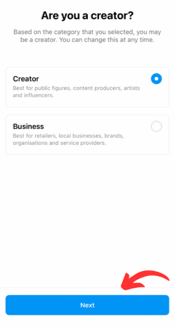
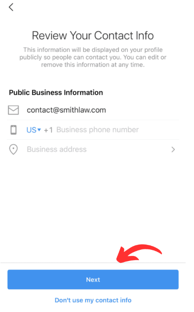
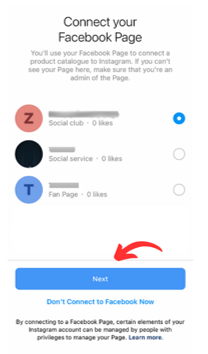
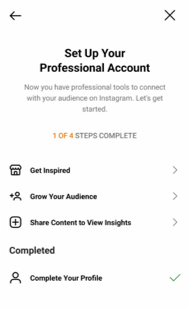
How To Create a Company Page On LinkedIn
Unlike Facebook and Instagram, LinkedIn is a professional platform. It is designed to stay in touch with old colleagues, and batch mates, get referrals for your business, and to get a job. LinkedIn is the world’s premier business network, with a user base crossing 134 Million every single day. But how do you effectively market your business on LinkedIn? In this guide, we have rounded up all the steps you need to know to create a company page from scratch on LinkedIn.
Step 1: Sign in with your personal account
To create a company page on LinkedIn, you need to sign in with your personal account. If you don’t have a personal LinkedIn profile first, you should sign up. This account would be the administrator of your company page (of course, you can add additional page managers later). Just like Facebook, it is not possible to create a company page without a personal account on LinkedIn. Once you have logged in, then comes the next steps.
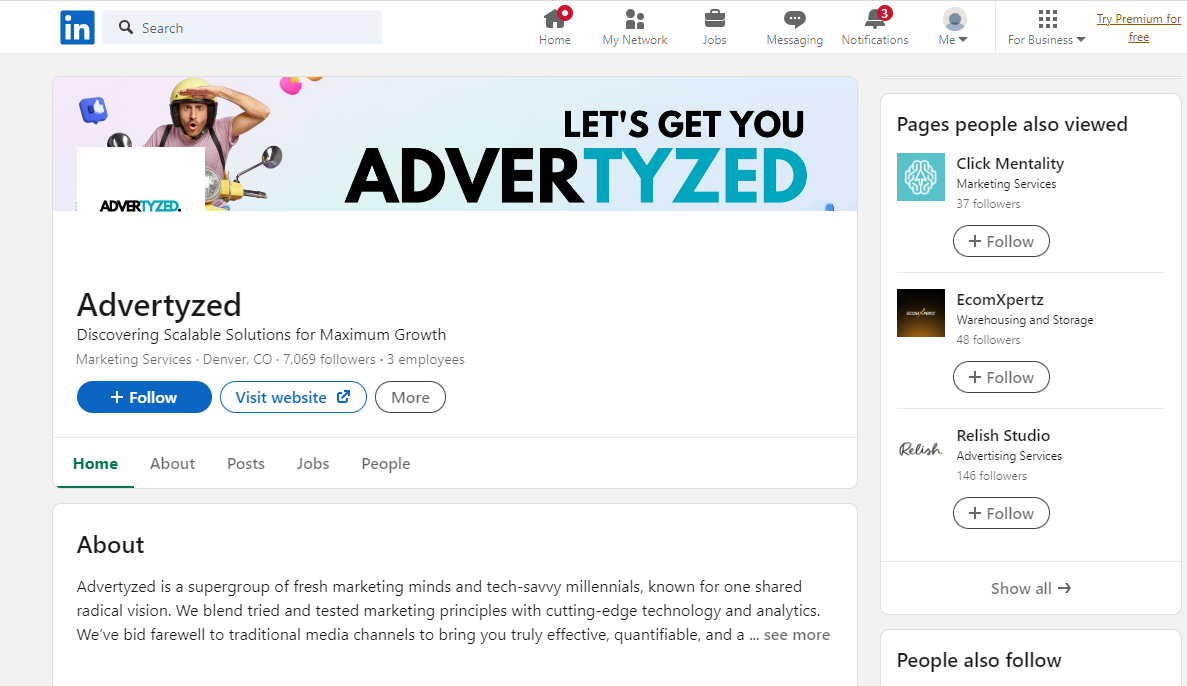
Step 2: Create a LinkedIn Company Page
Now that you have logged in and got access to LinkedIn, click on the Work icon at the top right of your browser. Scroll down to the bottom of the Menu and click on Create a Company Page.
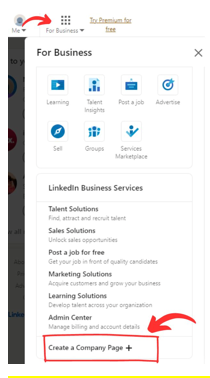
Choose the right type of page that perfectly suits your needs from the four available options:
- Company
- Showcase page
- Educational institution
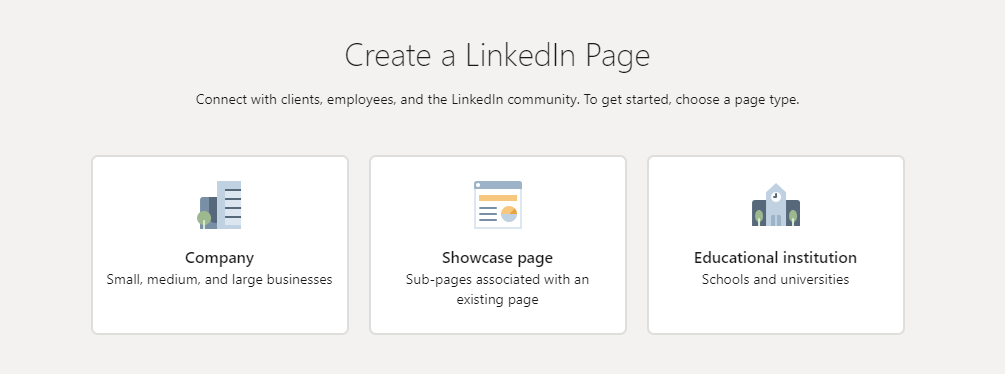
Both of these options are self-explanatory except for ‘Showcase pages.’ Companies or conglomerates operating in multiple divisions sometimes separate out their divisions and create a sub-page for each one of them. But these sub-pages are linked to the main corporate page.
Once you are done choosing the Page type, start filling in your details. Your logo and tagline hold the key to your first impression on LinkedIn. Invest some time and effort to craft a tagline that leaves a lasting mark and ignites curiosity. Advertyzed LinkedIn tagline is “Discovering Scalable Solutions for Maximum Growth.”
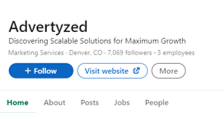
Once you’re done entering your tagline, click Create page.
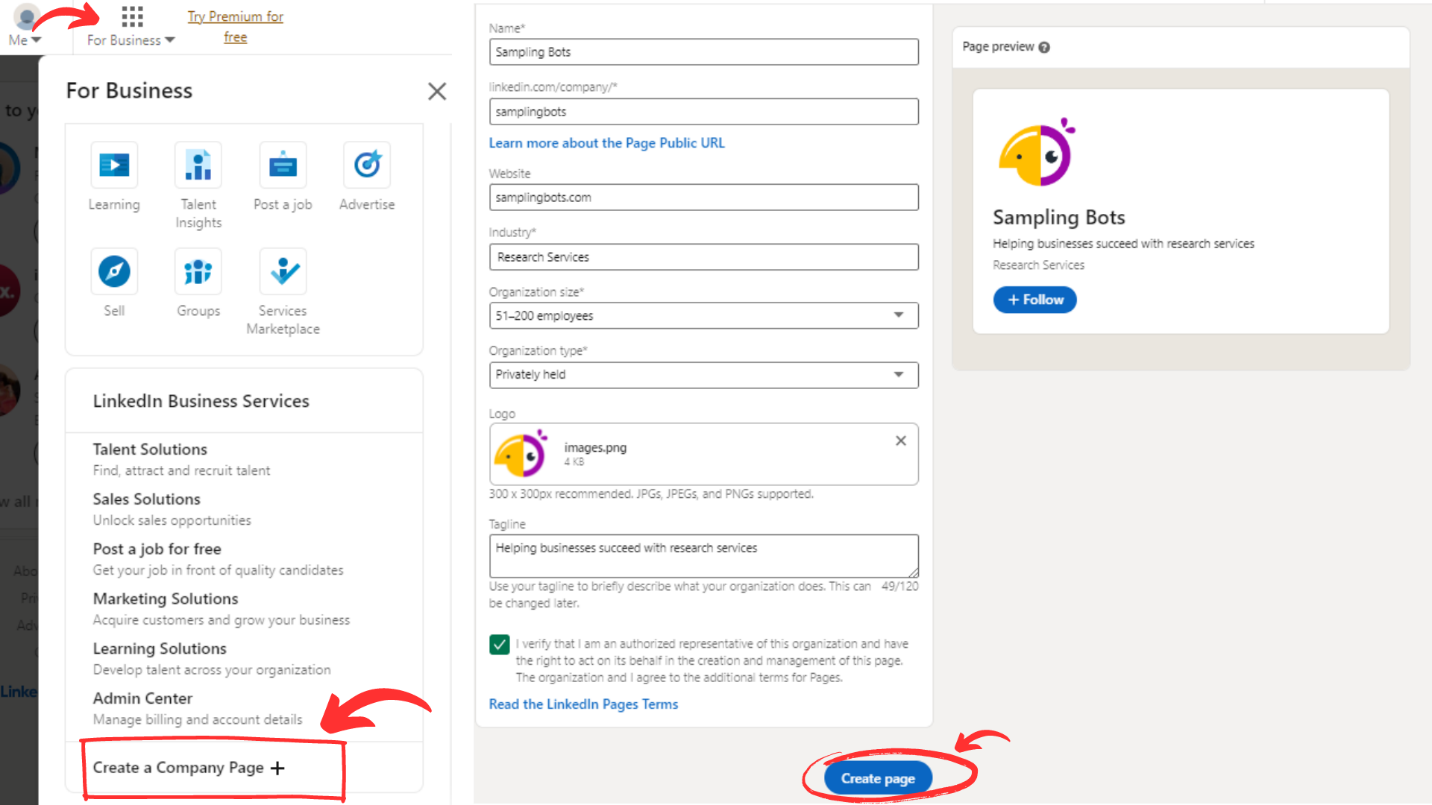
And there you have it – your Company Page is now ready to go!
Step 3: Optimize Your Company Page
There are thousands of company pages on LinkedIn with a massive following. But how did they achieve it? Yes, through optimization. Now that you have created a company page, it’s time to get noticed and make it visible. So let's begin optimizing your LinkedIn Company Page.
To get started, scroll down and click the blue Edit Page button.
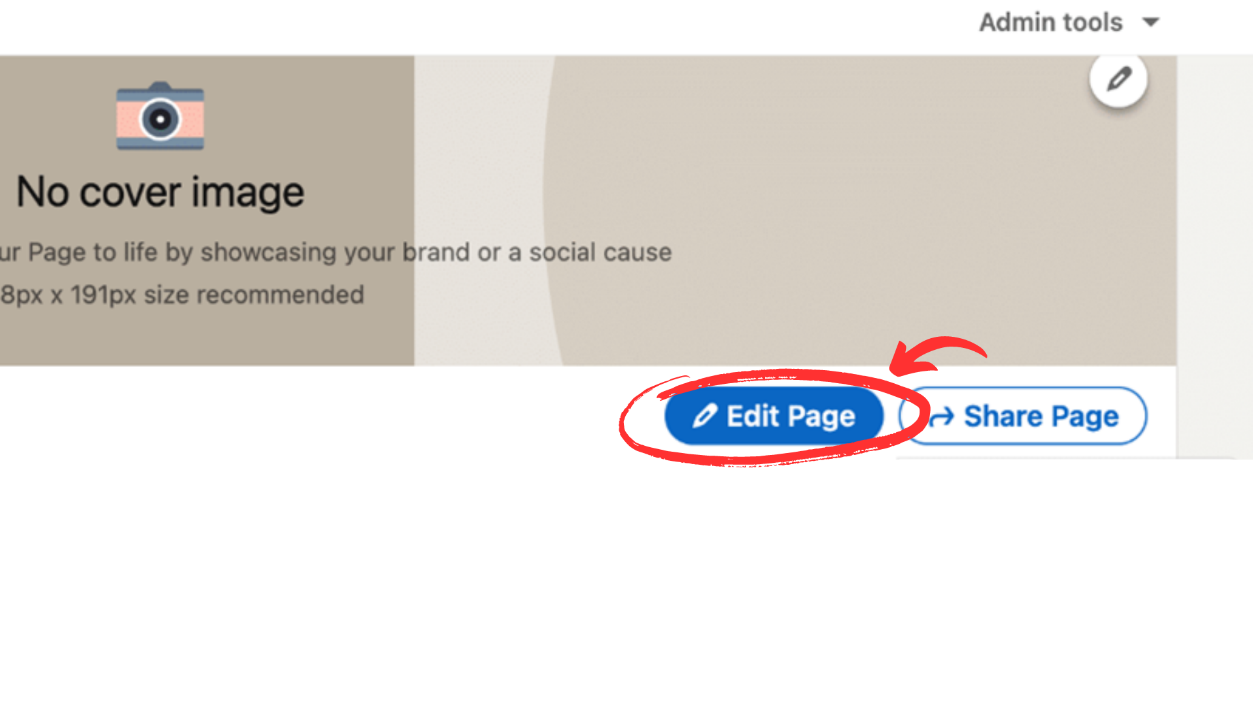
Fill out all the fields in this additional information area. By adding information, users or followers will have a clear understanding of your business and what your company does. In addition to that, it will also contribute to your LinkedIn SEO. You will appear on top of LinkedIn search results. But is it worth your time? Yes, it does! Companies with complete profiles and optimized LinkedIn pages get 30% more views.
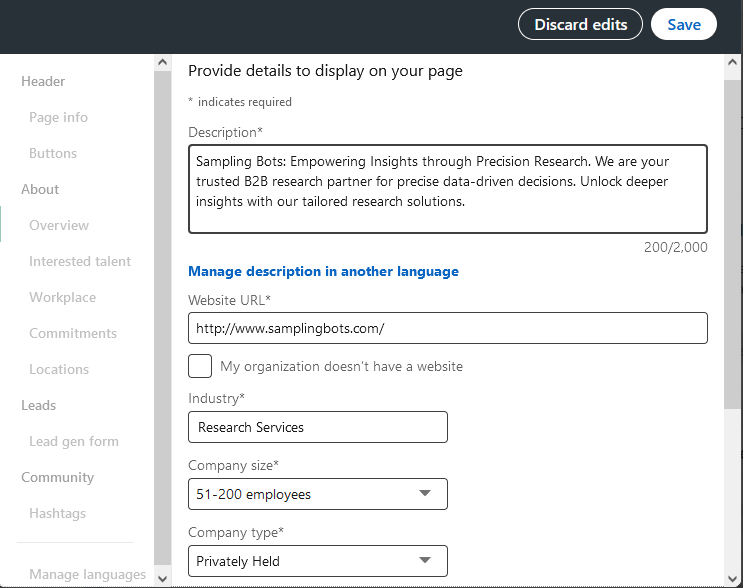
If you want to learn more optimization tips, you can read our blog on how to optimize your LinkedIn company page perfectly
Step 4: Bring followers and Build an Audience for your page
No one will know your page exists if you are not going to tell them. But how will you tell everyone there are millions of people on LinkedIn? Don’t worry, we will tell you. There are 4 ways to promote your LinkedIn page organically.
Share Your Page
From your Company’s main page, click on the Share Page button. Share your new page on your personal LinkedIn profile, and ask your employees, customers, and friends to give it a follow. This simple action can be your first step towards building a thriving LinkedIn community.
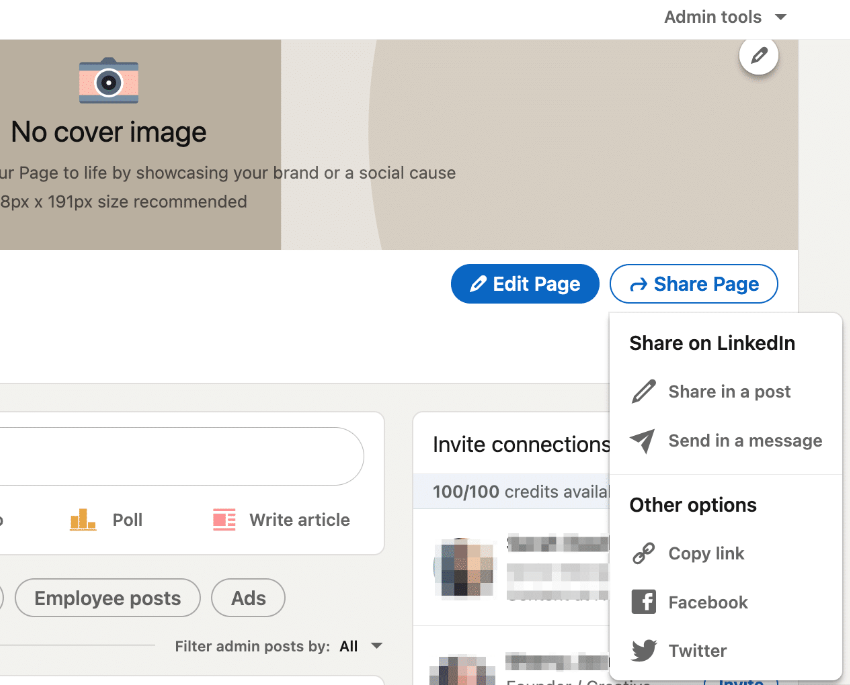
Send Invitations to follow Your Page
Great things start at home. To get started with promoting your page, you should first send an invite to your close friends, family members, and other LinkedIn connections from your personal profile. But it should be a slow and ongoing process as LinkedIn limits the number of invites you send at a time to avoid spam. People usually ignore invites on LinkedIn, but it hardly takes a few minutes, so why not?
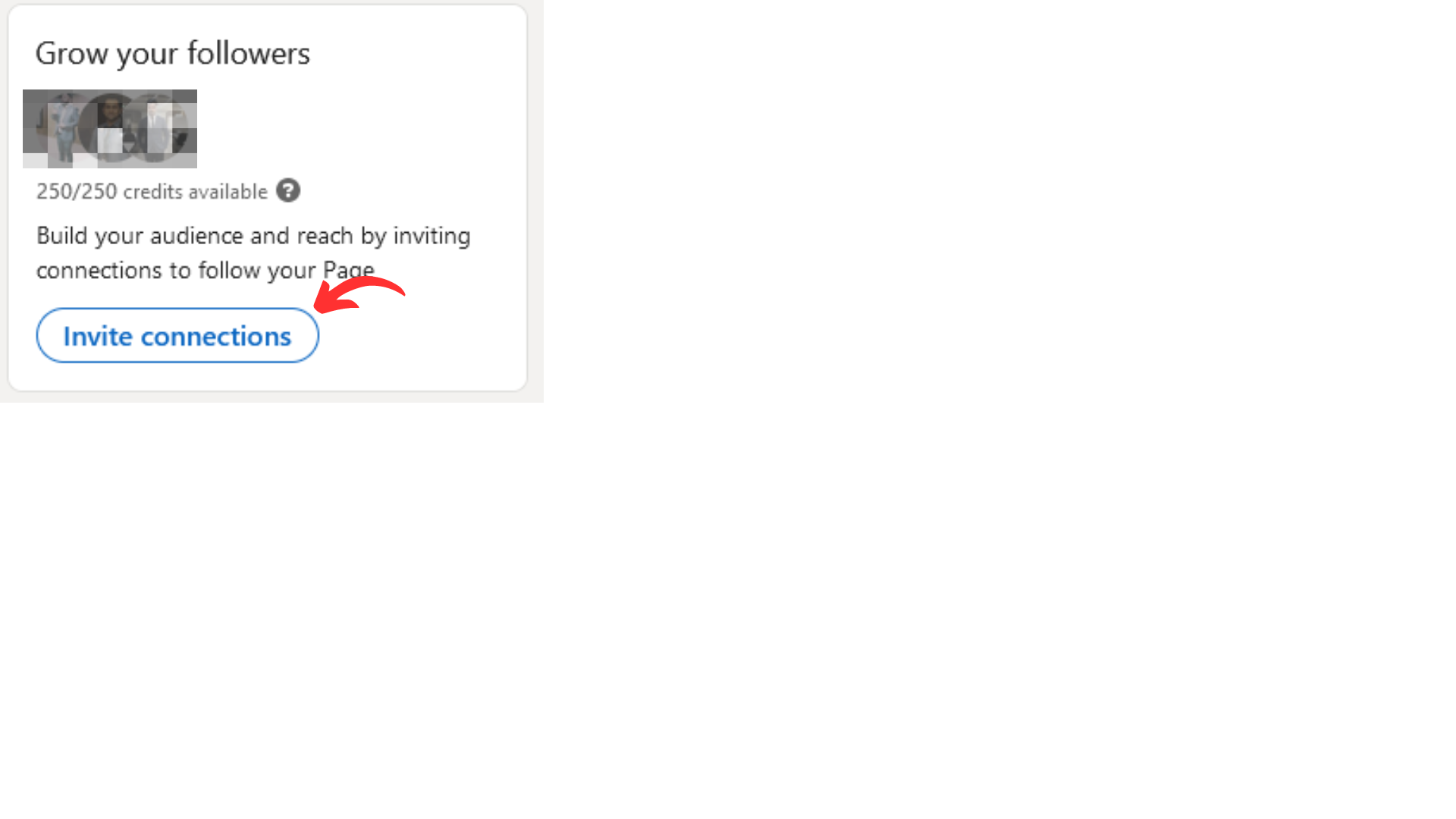
Encourage Employees to Add Company Page as a Workplace
For long-term growth, ask employees to update their job descriptions. LinkedIn allows employees to link their profiles to your Company Page as their workplace. This automatically creates a link to your page on their profiles, increasing visibility. The number of employees can play a significant role in building trust and credibility among people. People on the platform will know that these are the people who work at your company.
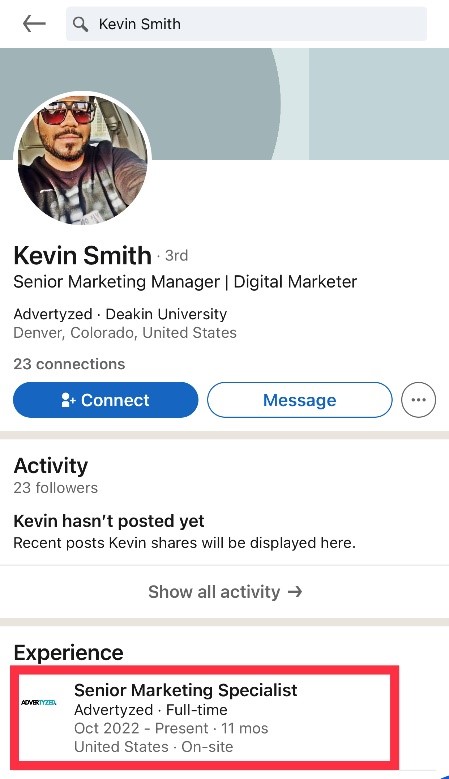
Focus on Employee-Generated Content
Maintain a culture of content creation among employees. When they share their insights, experiences, and expertise on LinkedIn, it positions them as industry thought leaders and indirectly promotes your Company Page's credibility.
TikTok Account For Business
TikTok – the place to see and get seen for businesses. TikTok has emerged as one of the favorite platforms for businesses in 2023. With a monthly user base surpassing a billion mark, you cannot ignore TikTok in your marketing strategy if you are a product-based company. So without wasting any time, let’s get started with creating a TikTok business account.
Just like Instagram, you need a personal account to create a business account on TikTok. So if you already have a personal account let us guide you step by step on how you can switch it to a business account.
Step 1: After logging in to your TikTok account, tap profile at the bottom right corner and then hit the menu icon  at the top right corner.
at the top right corner.
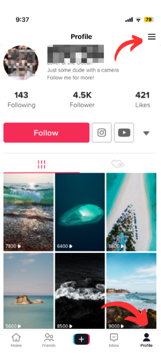
Step 2: Tap the My Account or Account option (whatever appears on your screen)
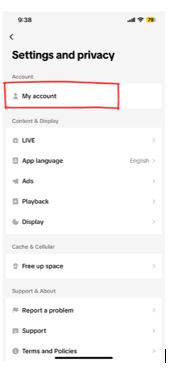
Step 3: Tap Switch to Business Account
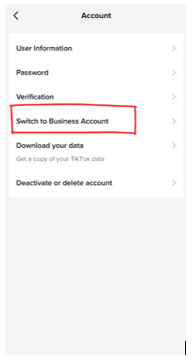
Step 4: Now, select the category that best describes your brand or business and tap Next.
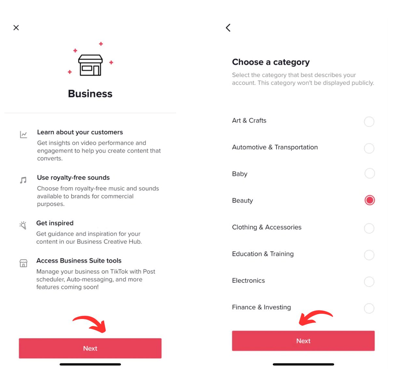
Step 5: Add an email address to your profile. We recommend you add a business email address, not a personal one.
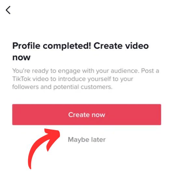
Boom! Your TikTok business account is ready. Start posting engaging videos and get your brand the attention it deserves.
Just like every other platform, TikTok needs to be optimized and have the right content strategy. We will be discussing later in this guide how you can create winning marketing strategies for TikTok.
In the previous chapters, we have talked about more than ten social media platforms. If you are reading this guide from the start, you must have a clear understanding of the important insights, daily and
monthly user base, and how to create business accounts and pages on the most active social media websites. Moreover, you might have an idea about the audience that actively uses a certain social media website. But the question still stands. Which one is the best platform for my business? And should my business be present on every platform? This chapter is all about choosing the right platform for your business.
Since you are already busy managing multiple operations and looking after all sorts of things, as a small business, it is impossible to dedicate your time and efforts to being active on every social outlet.
Although the competition is very tough, and you don’t want to miss any potential lead on any channel, we recommend a humble start. It is always good to narrow down the options and focus on a few platforms that your audience actively uses. But how do we identify these platforms? We will share a step-by-step guide to choosing the right platform for your business.
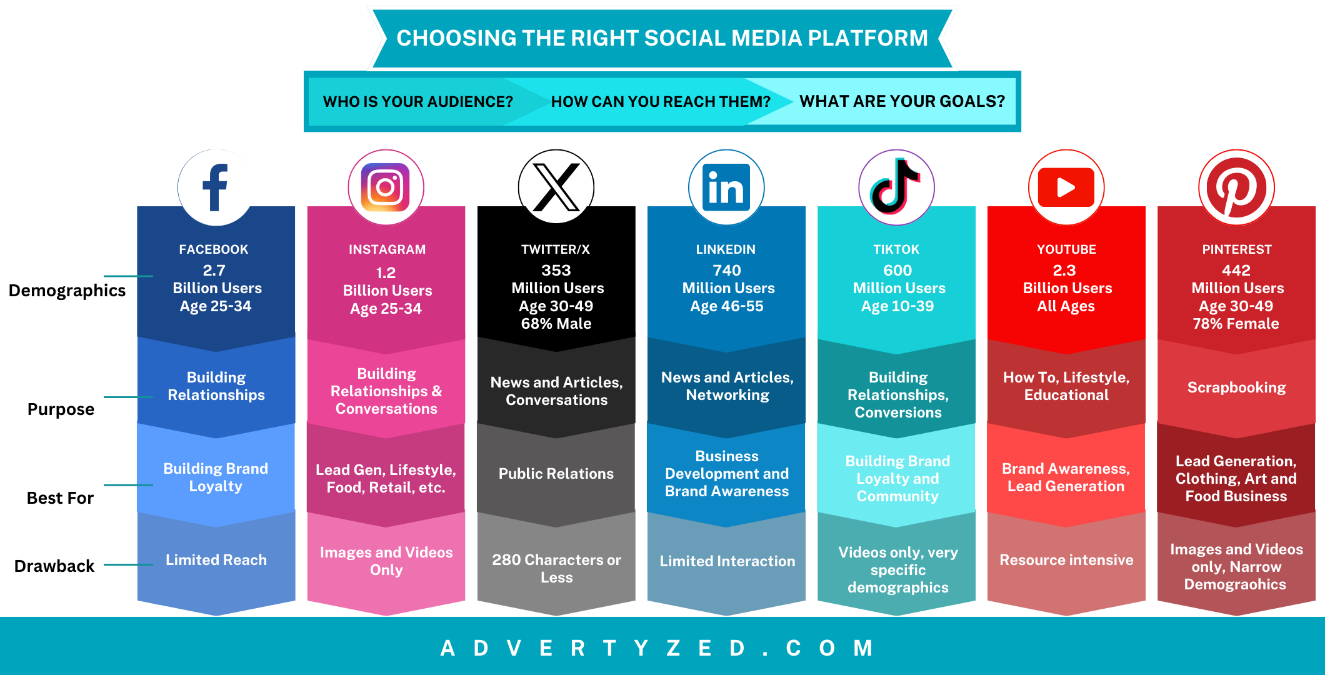
Identify Your Audience
Choosing the right social media platform for your business starts with identifying your audience. It matters a lot that your audience is active on the social media channel where you market. For example, Facebook has the largest user base as compared to any other platform. But your audience actively uses Instagram, so all of your marketing efforts are going in vain because you need to reach your audience on their preferred platform.
You have to be as specific as possible about your audience to make a rational decision. Once you identify your audience and build their personas, it will be easier for you to select the platform on which you will be putting in your digital marketing efforts. Here, we have some questions to help you create an audience or buyer persona for your business.
• Who is your typical customer?
• How old are they? Or in which age bracket do they fall in?
• What is the gender of your customer?
• What are your customer interests other than your product and services?
• What is the annual income of your customer?
• Is the customer married?
By writing down the answers to these questions, you will easily build your customer profile. You can add more questions to this list based on your industry and services.
Consider Your Business And Its Branding
Your channel selection is highly influenced by your brand itself, its personality, visuals, branding, business type, and products and services. Highly visual brands like photographers, studios, or furniture stores should focus on channels like Instagram and Pinterest . Whereas LinkedIn tops the list for large B2B enterprises.
But choosing the right social media platform is not black and white either. Some large corporations also have a visually stunning brand presence, that’s why they market on Instagram as well. Like Apple and Google have a visually stunning Instagram presence. Similarly, creative ventures like photography are also a business, they can capture some corporate clients from their LinkedIn network. So opting for the right social media channel depends totally upon your business. You need to understand and analyze your business and its offerings on a deeper level and make sense of it to choose among the right available option(s).
Define your goals
Why do you want to be on social media? The answer to this question impacts a lot on your decision to choose the right social media platform. Before starting the marketing efforts on social media, you should define your goals. It is obvious that, as a business, your main goal is to drive more revenue, but social media isn’t all about selling. There are other creative goals for social media. Some brands use social media to develop brand awareness and strong relationships with their customers, while others use it for customer support.
Take Netflix, for instance. They're an on-demand media company, and they use the Twitter handle @Netflixhelps to tackle customer service problems. This not only eases the load on their phone lines but also lets happy customers promote their brand.
Let's say you are planning to share engaging content with your followers, Instagram is the place for you. However, if customer support is the main goal, then you should consider Facebook and Twitter. Social media work in unusual ways for brands. When you are setting your social media marketing goals, it is important to see the bigger picture rather than just focusing on sales.
Keep An Eye On Your Competitors
Now that you know your goals and audience and have a good understanding of your business, the next important step is competitor analysis. You should keep an eye on your competitors and know which platforms they are using. Some people say competitors are your best friends, and they are right to some extent. By doing extensive research and competitive analysis, you can follow a similar social media strategy as your counterparts. As a small business, it is easier to find loopholes and gaps within a competitor’s strategy and capitalize on it, rather than testing your own strategy and waiting for it to perform.
Competitive analysis will also help you to choose the right platform for your business. For example, if your competitor extensively markets on Instagram, but the marketing efforts on Facebook are very minimal, you know where to go. While you shouldn't blindly follow your counterparts, keeping an eye on them helps you make well-informed decisions in your own unique direction.
Here are some of the important insights we recommend you focus on while doing your competitive analysis.
• What platforms they’re using?
• What’s working/not working for them?
• How engaged is the audience on each channel?
Want to dig deeper? Download our social media competitive analysis template.
Find Your Audience
Once you are done with defining your goals and doing research, it's time to find the right audience for your business. Finding the right audience will help you prioritize the platform(s) you will be focusing on in the future. To do this, you need to have a look at the demographics. In the previous chapters, we have given you detailed insights on each of the platforms. So, you might already have an understanding of where to find your audience.
Keep in mind the platform(s) your audience actively uses. For example, young folks do have Facebook profiles, but they actively engage on Instagram and TikTok. You need to understand your audience's behavior in using each platform and then pick the right platform that clicks best for your business.
Keep The Available Resources In Mind
Getting returns from your social media marketing efforts requires sheer commitment and patience. Social media marketing is an ongoing process that runs side by side with your other marketing activities. Think of it like a garden. You have to take care of it, feed it, and give it what you want it to give back to you.
We understand your resources are limited as a small business. And we also don’t expect you to hire a full-time social media marketing team right away. If you have one person who will be working on your social media for 5-7 hours a week, it’s smarter to stick to one or a maximum of two platforms. But if you have someone working full-time, then you can handle more platforms. It's about what you can handle properly to make it grow well.
Always keep in mind that social media can really be demanding. It can easily eat up all your time and still leave you with a feeling that you are not doing enough. So before jumping on to a new social media platform, ask yourself if you have enough time and resources to manage it. If the answer is no, stick to one platform and put your best in it. But if the answer is yes, customize your content according to each platform. As people behave differently on different platforms, they expect something different from brands as well. So, avoid posting the same thing on all social media channels. It's like having different conversations with different groups of friends.
Now that you have a clear understanding of choosing the right social media channel to market your business, let’s move forward to craft a social media marketing strategy.
Just like every other marketing activity you might have done so far for your business, social media also demands a plan. It’s a place where you want to influence, engage, and convert. You cannot just make an account and get going. To succeed in a highly competitive business environment, it is necessary to have a social media marketing strategy that aligns with your goals and drives maximum ROI. In this chapter, we will break down the important elements and guide you to craft and execute a perfect social media strategy. But first, to keep you motivated, we will share some of the benefits of having a social media strategy.
Benefits Of Having A Social Media Strategy For Small Businesses
The most difficult part of social media marketing is maintaining consistency. One post can go viral, and one reel can hit a million views, but how can businesses repeat this more often? The answer is social media strategy. Having a social media marketing strategy equips businesses with tangible benefits such as:
• It gives direction to all of your social media marketing activities
• Improves brand awareness
• Allows you to track performance by giving you measurable insights
• Helps you craft personalized content
• You can easily measure brand sentiment
• Better understanding of what works for you and what doesn’t.
Before we move ahead to guide you on how to create a social media strategy for small businesses, it is better to understand the difference between social media marketing strategy and content strategy. While they both are closely linked, they serve a different purpose. Here are some of the key differences that will give you a better understanding of social media marketing strategy and content strategy.
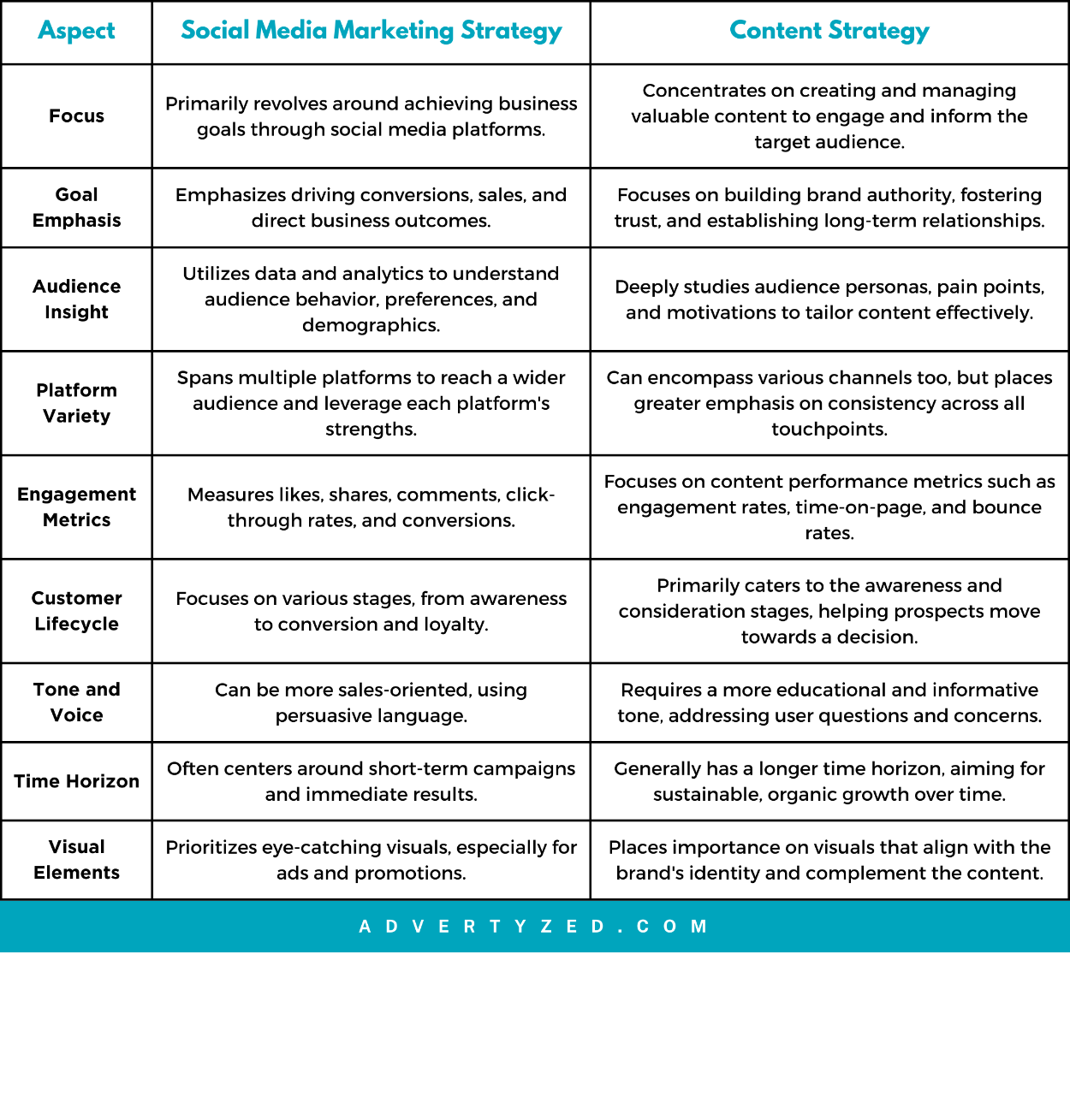
In a nutshell, social media marketing is about using platforms to achieve business goals quicker. People often use ads and promotions in their social media marketing strategy to reach masses. However, Content strategy is about making valuable stuff that builds trust over time by talking to your audience's interests. Both of them are equally important and goes hand in hand to make communication more convenient and make people interested in your brand.
Forming A Perfect Social Media Strategy For Small Businesses
Since you have been reading this guide from the beginning, by now, you must have a clear idea that without social media components, modern-day marketing is incomplete. But crafting a perfect social media strategy can be tricky, particularly when the platforms are evolving every day with new features.
You might have heard people saying social media marketing is dead. It is impossible to get a good reach and generate qualified leads without running ads or spending a hefty amount of money. But trust us, they are far away from reality. We do agree that getting organic reach and engagement is not as easy as it was in the early days. Some tactics that businesses are still using have become outdated and become less effective. But that doesn’t mean social media marketing is dead.
Getting noticed on social media is getting tougher, you must have a strong plan. Trying to outsmart social media algorithms won't work if you share bad posts or repeated content, try to oversell, send automated private messages, or send spam. To really connect with your audience, your content should be good, varied, and genuine. We will tell you the secrets to reaching more people by using all the tools social networks provide to make your brand stand out.
Since we have already discussed some of the important points of creating a social media strategy in the previous chapters, we will start with a small recap and then move ahead.
Identify Your Audience
Social media marketing is all about talking to the people who matter – your audience. To start strong, figure out exactly who you want to talk to on social media. This helps you make content that they'll really like and connect with. To learn more about identifying your audience, refer to Chapter 3.
Define and Set Measurable Goals
A winning social media strategy demands SMART (Specific, Measurable, Achievable, Relevant, and Time-Bound) goals. To see how well you're doing and get the maximum ROI, start by figuring out what you want to achieve with your social media presence. You can have one main goal or several different ones—it's up to you! Refer to Chapter 3 to learn more about social media goals.
Befriend Your Competitors
To create a perfect social media marketing strategy, it is important to understand your competitors. You need to dive deep into your competitor’s social channels to monitor what they do and what is working for them. Cash in the opportunities your competitors are missing by forming your social media strategy around those gaps. You can check Chapter 3, where we’ve discussed how you can keep an eye on your competitors.
Optimize Your Social Media Channels
To succeed in a highly competitive social media world, it is important to optimize your profiles. Your audience should have a sound understanding of your business, location, and offerings. Optimization also helps you to get seen once you add the right keywords. You can use keyword research tools to craft a customer-centric keyword strategy. In the previous chapters, we have shared details about the importance of optimizing your social media channels. You can review Chapter 2 to see how you can optimize your social media accounts.
Plan Your Content
After getting your channels optimized and choosing the platforms for social media marketing, it's time to plan your content and approach. Planning social media content can be time-consuming. You need to do a lot of research and analysis, but here we have some planning tactics broken down into simpler steps.
Create a tone for your pages
Your tone determines how you will interact with people on the internet. Are you formal or informal? Do you want to be seen as a humorous brand or a serious business? Each platform has its own personality, too. Like some brands use humor on Twitter but are quite sober and serious on LinkedIn. So, are you going to communicate on each platform differently, or would it be the same?
Create Content Buckets
It is important to understand your Unique Selling Propositions (USPs) to create content buckets. For example, if you are a wellness brand or a gym, you can post fitness tips in one content bucket. Another content bucket can be around some diet plans and healthy recipes. If you need help with content creation or find it difficult to pull out good content, you can use content creator tools.
Create Content Calendars
It is important to post regularly on social media. As a small business, it can be hectic to keep up with trends. A content calendar can help you post in an organized way, especially if you are posting on multiple channels. There are the best times and days that can give you maximum reach and engagement on different platforms, which you can find here:

Schedule Your Posts
Post scheduling is a strategic approach to effectively manage your social media content and posting. It can be hard for small businesses to consistently post manually, especially when you are present on multiple platforms. Social media scheduling tools like Creator Studio (now Meta Business Suite) and Social Pilot allow you to do cross-platform post-scheduling. You can prepare your content ahead of time and schedule it to be automatically published at specific dates and times.
In addition to that, scheduling enables you to maintain a diverse range of content types, such as videos, images, articles, and promotions, without overwhelming your audience with too much content at once.
Consider Mobile Dominance
Over 90% of users access social media platforms with their mobile phones. To ensure a seamless experience for your audience, make sure your content is mobile-optimized and looks good on mobile screens.
Post Video Content More Often
While making your content buckets and content calendars, don’t forget to add video content to the mix. Video content receives higher engagement than other types of content. Social media platforms are increasingly favoring video content, with live videos and reels (short videos) often generating even more engagement.
Invest In Community Management
Social media is a great tool to build a community around your brand. Communities are fantastic things as they drive more engagement and awareness of your brand. An active community plays an important part in your social media strategy as it can also create brand advocates, ultimately drawing in new customers to your business. But these communities need to be managed. You need to nurture it and then grow it. Here are some important tips for effective community management.
Understand The Algorithm
As previously discussed, the social media algorithm determines the content users will see. Understanding how algorithms work (e.g., Facebook's News Feed Algorithm or Instagram's algorithm ) can help you create content that gets more visibility.
Engagement Timing Matters
The first 30 minutes after posting are crucial for engagement. Higher engagement during this window signals to the platform that your content is valuable and relevant, potentially boosting its visibility.
Be Responsive
Being responsive is a key element for social media community management. You need to get back to your customers as quickly as possible. For example, if a person is asking for the price of a certain product, respond to them immediately and be helpful. Ensure your responses are positive, even if the customers complain about certain things. This will help create a positive experience and contribute to avoiding social media crisis. Some Social media platforms allow you to send auto-generated responses as well. Optimize your messaging apps for better results.
Get More Reviews
Reviews also play a crucial role in an effective community management strategy. To win the trust of new customers, it is important that your brand must have reviews on various platforms. While Google reviews are widely trusted by most people, there are other platforms to consider as well. You can encourage your customers to share their feedback on Facebook, too. If your customers are satisfied with the services but are reluctant to drop a review, you can incentivize them with a giveaway or a contest. Getting reviews is a slow and ongoing process, but having a good number of positive reviews around your brand helps you attract more customers. This, in turn, can elevate your brand's visibility in search results and recommendations.
Grow Your Followers
The most important part of social media strategy is getting new followers and retaining the existing ones. There’s no point in being active on social media and spending a hefty amount of money on resources if you are not getting new followers. But followers don’t grow overnight. It requires consistent effort, like everything else in the social media sphere.
The most important part of social media strategy is getting new followers and retaining the existing ones. There’s no point in being active on social media and spending a hefty amount of money on resources if you are not getting new followers. But followers don’t grow overnight. It requires consistent effort, like everything else in the social media sphere.
When you're growing organically, what you post online is super important. It's like the magnet that attracts people to you. You can do fun stuff like contests or show what's happening behind the scenes at your company. You can also tell people about one platform you're on when you're using another one, like telling your Facebook followers about your cool Instagram pictures.
With ads, you spend some money (ad budget) to reach more people. You can decide how much money you want to spend every day (ad spend). You can show your ads to a specific group of people who might like your stuff. There are tools that help you keep track of all your ad campaigns. You can also ask famous people or influencers on the internet to talk about your stuff – they can help you get noticed.
Sometimes, even micro-influencers can help a lot, especially if you're a local business like a restaurant or bar. You can also get news articles or stories written about you to get even more people interested in what you're doing online.
Now that you have created your social media strategy, your pages must be up and running. It is necessary to keep changing and testing different things to achieve desired results. In this chapter, we will be discussing some of the social media tools to get proper insights about your digital business, and based on these insights, you can re-strategize and make changes to your existing social media strategy.
Digital marketing, especially social media, is a fast-paced world. With ever-changing algorithms and new updates coming every day, it is vital to stay ahead. This means businesses must continuously try adding new things and evolving their strategy to stay effective. Here, we have some social media monitoring and management tools that will help you analyze what’s performing the best and what requires adjustment. They also provide critical insights into your page and campaign performance, paving the way for capturing new leads and business growth. So, let's dive right in!
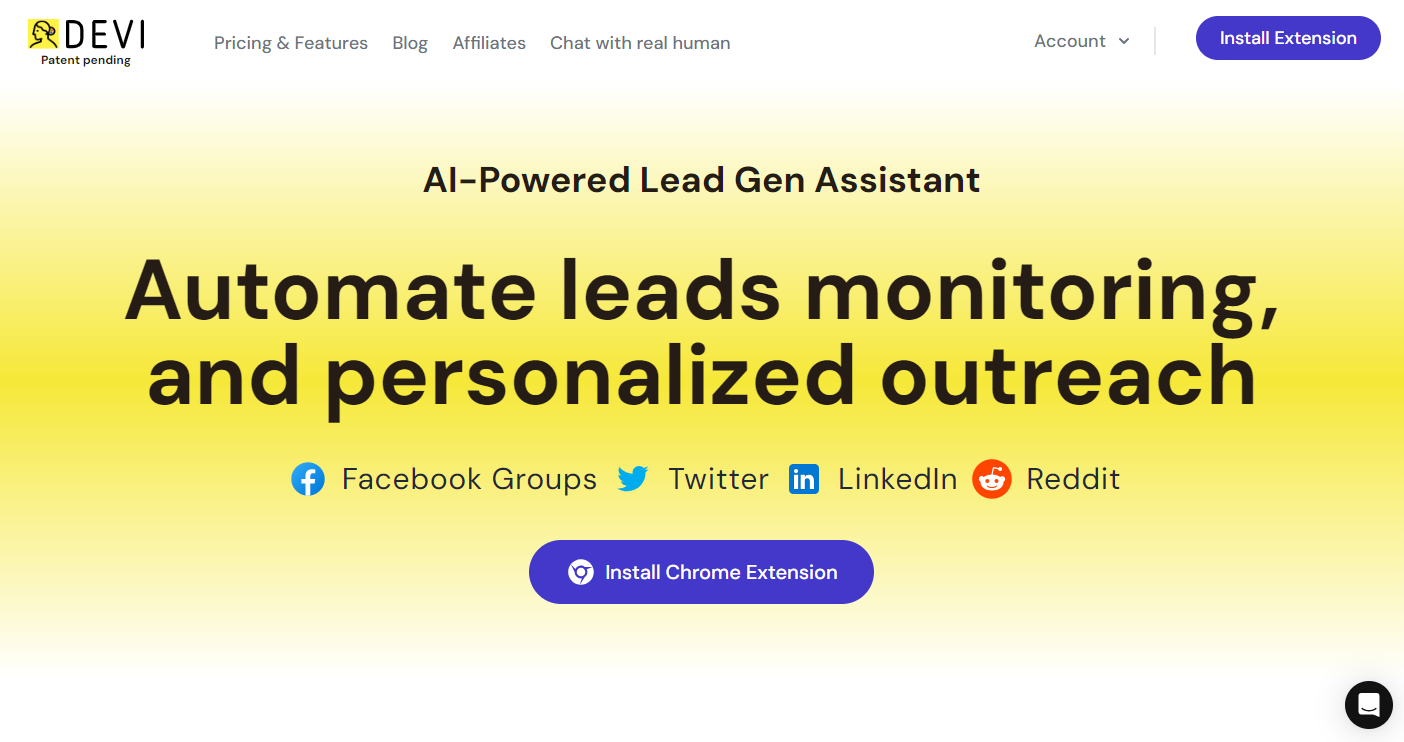
This is one of the most underrated social media monitoring and lead-capturing tools: Devi Tool. It allows you to enter specific keywords based on your business to monitor and capture leads. Here’s the best part: Once you've signed up and added Devi's extension to your browser, you'll receive alerts whenever someone posts anything containing your chosen keywords on social media. Yes, that includes posts on Facebook groups (both public and private - you read that right, private groups, too), LinkedIn, Twitter, or Reddit. All of these posts will show up on your Devi dashboard.
For example, if you're a digital marketing agency offering social media marketing services, just add keywords like 'social media marketing,' 'best social media agency,' or 'graphic designer' to your Devi tool. Now, wait for the magic to happen. You can see who has posted anything related to your keywords. You can either view the profile of the person who posted or send them an AI-generated sales pitch. This tool also has a built-in Chat GPT, so you don’t have to worry about making too many changes in the pitch. But if you want to write it yourself to sound more personalized, you can do that as well.
While it's a paid tool, it can save you a lot of time and money. According to their website, Devi Tool can save up to 3-4 hours per day. You can also explore this tool for free, as they've included a comprehensive video tutorial on how to use it for monitoring, lead capture, and outreach.
Meta Business Suite By Facebook
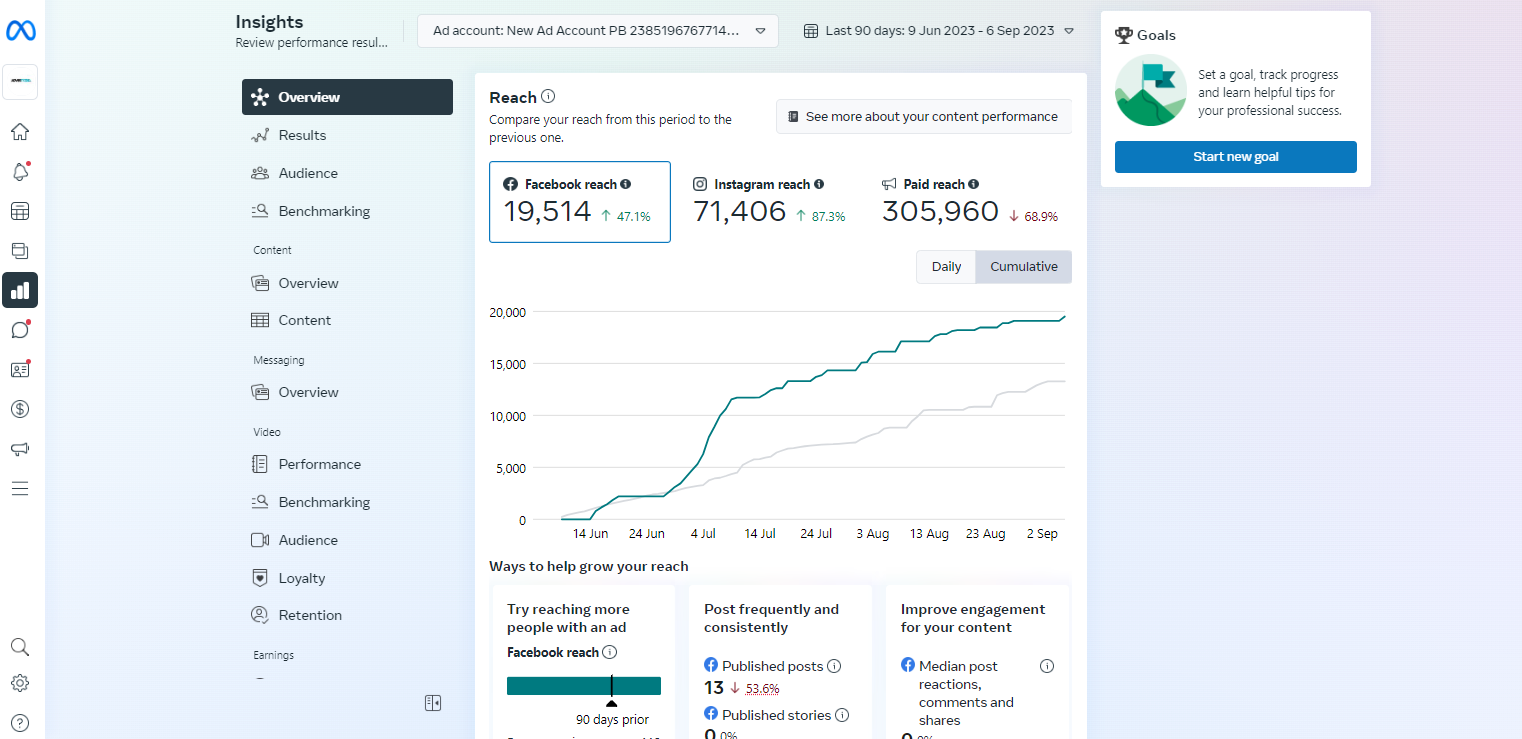
As mentioned in the previous chapter, Facebook Creator Studio which has now merged with Meta Business Suite is a great tool that offers invaluable cross-platform posting and post scheduling capability. However, it extends beyond these features, serving as a comprehensive tool for monitoring and gaining insights into the performance of all your pages and posts.
For social media managers handling Facebook and Instagram for multiple brands and businesses, Meta Business suite and other business tools by Facebook streamlines content publishing across both platforms, simplifying the process at a high level. The best part? It's a free tool that brings together social media analytics, scheduling, and community management under one roof. Furthermore, it offers the ability to set up monetization tools, track earnings, run paid ads, and manage payout settings seamlessly.
One standout feature of Meta Business Suite is its built-in inbox, which allows you to engage with your Facebook and Instagram audience without switching accounts on Messenger. You can efficiently communicate with your customers from this platform by utilizing Meta Business Suite. The Inbox conveniently consolidates all interactions into one place, enabling you to respond directly to comments and messages from the dashboard. It also aids in workload management by categorizing conversations as Done, Spam, Unread, or Follow-up.
In the Insights section, you can gain a comprehensive view of your performance on Facebook, categorized into four main sections: Pages, Videos, Stories, and Instant Articles. Each category offers specific dashboards, such as Audience Insights for Pages and Retention Insights for Videos. You can easily customize your view by selecting specific timeframes within each dashboard and, if needed, export the data to create a social media performance report for presentation purposes.
Meta Business Suite is indeed a versatile and vital tool for streamlining social media management and optimizing performance.
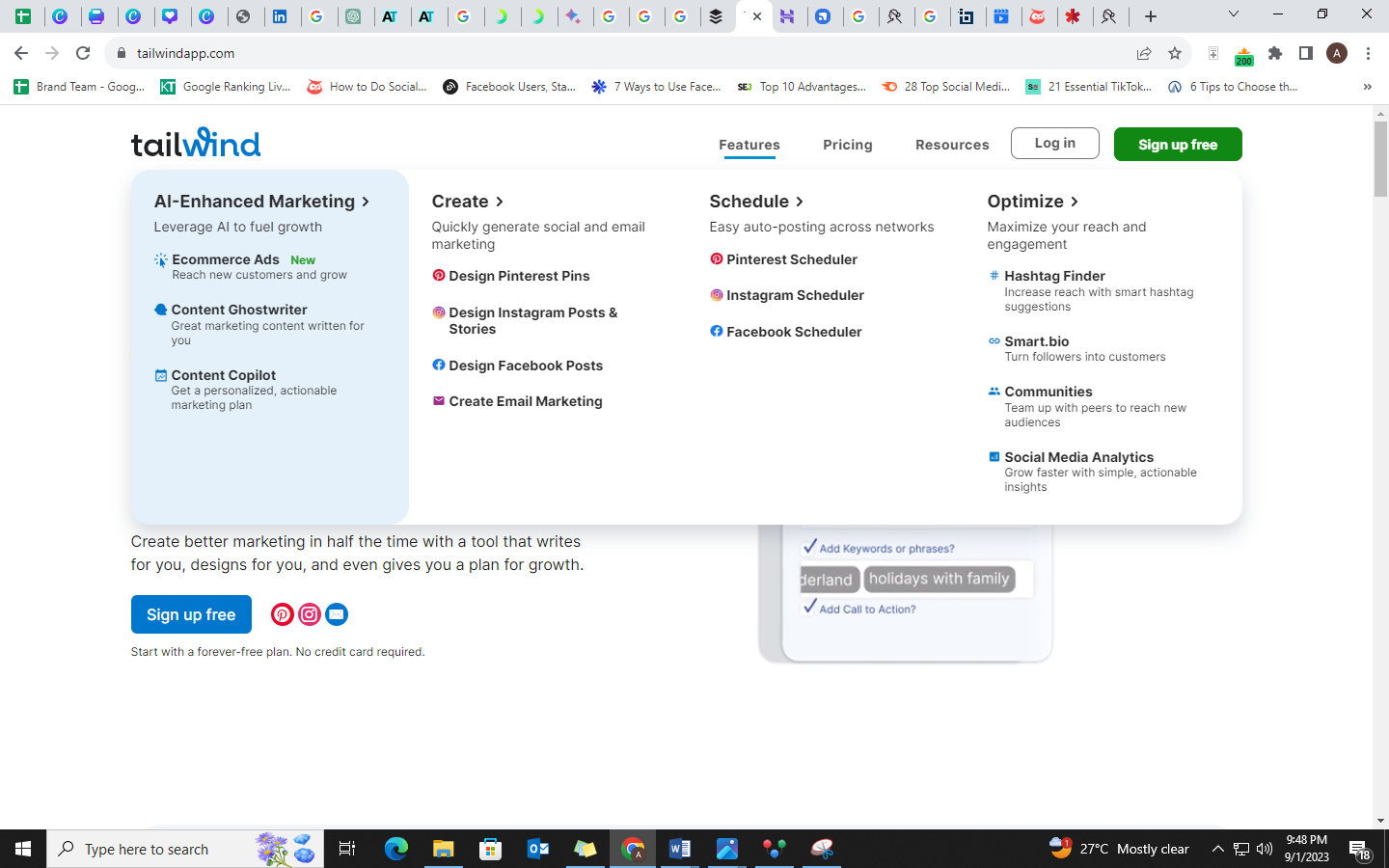
Here's another fantastic tool for managing Pinterest, Instagram, and Facebook. Pinterest works a bit differently from other social platforms. To get more traffic and followers, you typically need to be more active and post around 3-4 pins (Pinterest Posts) every day. This can eat into your work-life balance, but not if you have a Tailwind subscription.
Tailwind lets you do everything in one place, so you might not need a separate Canva subscription. Plus, it comes with ghostwriting AI features, saving you some extra costs. However, if you already have a designer and copywriter on your team, you can easily upload your own designs.
What's more, Tailwind offers a feature that can help you excel on social media. Tailwind Communities is an internal tool where over 30,000 Tailwind members collaborate to share each other’s content and grow faster. It's particularly effective for new Pinterest accounts, helping you boost your content to people in your niche who share your interests.
Tailwind offers many features other than creating and managing content for your social media accounts. You can further explore this tool on their website.
These are just a few tools to measure and improve your page's performance. There are many tools out there, each with its unique features. But as a small business, it's essential to make a smart choice and invest in the right one.
For instance, tools like Social Pilot and Sprout Social are excellent for seamlessly managing social media and posting across different platforms. Some tools, like Hubspot and Hootsuite, even come with built-in CRM systems. You can choose a single tool that meets your needs or combine a few—it's up to you.
If investing in multiple tools isn't feasible, but you want a wide range of features to excel in the competitive market, consider hiring a trusted social media marketing agency. They have skilled social media consultants equipped with the right tools to take your social media and business to the next level. They can enhance your page performance, create engaging content, foster a vibrant community around your brand, and boost your sales. With the right social media marketing team, success is within reach.
After reading this guide, we hope you understand how to do social media marketing for small businesses in 2023 and its importance in the current digital era. But to make it easier to recollect when you re-visit
this blog post, here’s a list of key takeaways from the social media marketing guide for small businesses that will refresh your memory.
1. There are more than 100 social media platforms on the internet, with 15 of them having more than 500 Million monthly active users. It is not necessary for you to be present at each one of them. To thrive, you need to find the platform(s) your audience prefers and put your marketing efforts into it.
2. Facebook is the largest social media marketing platform, with a monthly user base crossing 2 billion. It is the best platform for every small business as it allows many options, both paid and organic. And can contribute to making social media marketing efforts successful for you.
3. LinkedIn is the best platform to do B2B marketing and reach C-level executives.
4. It is important to optimize your pages to appear higher in search results. Add relevant keywords in your social accounts’ bios, add location to your pages, and get reviews.
5. The best social media marketing strategy can be created by keeping an eye on your competitors. Capitalize on the opportunities and platforms your competitors are missing out on to stand out and win new customers.
6. Always be consistent with your brand tone, personality, and overall branding on social media.
7. Post relevant, trending, and engaging content to get more traffic and grow your audience.
8. There are right times and days to post on social media to get maximum reach and engagement on your post. Always post on ‘Golden Hours’ to get the desired results.
9. Social media works as a great tool to build a community around your brand. An active community plays an important part in your social media strategy as it can also create brand advocates, ultimately drawing in new customers to your business.
10. Hundreds of social media tools are available for effective management, content creation, and lead generation. Small businesses can choose a single tool that meets their needs or combine a few based on their budget.
11. Small businesses should consider investing in a social media agency due to the specialized expertise and time-saving benefits they offer. By outsourcing social media management, small businesses can free up their time, access premium tools and analytics, maintain a consistent online presence, and receive measurable results, all at a cost-effective rate.
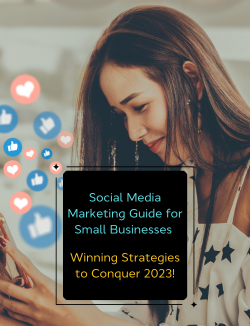
Simply fill out this form to receive a PDF version of our guide. We’ll also include our paid media outcome worksheet as a bonus.
 Social Media Marketing Guide for Small Businesses – Winning Strategies to Conquer 2023!
Download this guide and our bonus persona template.
Social Media Marketing Guide for Small Businesses – Winning Strategies to Conquer 2023!
Download this guide and our bonus persona template.
Chapters




